- Free general admission

Endeavour Voyage: The Untold Stories of Cook and the First Australians
Endeavour voyage, kamay – botany bay.
29 April 1770
Dooragan, Mooragan, Booragan – Three Brothers Mountains
12 May 1770
Gooragan – Bustard Bay, Seventeen Seventy
23 May 1770
Yarrabah – Cape Grafton
10 June 1770
Endeavour Reef
11 June 1770
Waalumbaal Birri – Endeavour River
17 June to 4 August 1770
Bedanug, Thunadha, Bedhan Lag, Tuidin – Possession Island
22 August 1770
Munda Bubul – Point Hicks
19 April 1770
Gulaga – Mount Dromedary
21 April 1770
The story of HMB Endeavour 's 1770 voyage lies at the core of the Australian nation. Endeavour Voyage: The Untold Stories of Cook and the First Australians exhibition explored views from the ship and shore on the 250th anniversary of the 1770 journey.
Endeavour Voyage was on show at the National Museum of Australia from 2 June 2020 to 26 April 2021.
Watch filmmaker Alison Page and the Museum's Senior Indigenous Fellow Margo Neale in a special screening of The Message and live stream conversation on YouTube .
For 126 days, Cook and his crew travelled up Australia’s east coast — from what we now know as Point Hicks in southern Victoria to the tip of Cape York in Queensland. Join us in re-looking at the events of 1770, and embrace a shared history of this country.
Bana Yirriji Artist Group: We want Australians and the rest of the world to hear the other side of the Captain Cook story.
Explore views from the ship and shore
Knowing Plants
Explore Indigenous and European knowledge of plants collected by botanists Joseph Banks and Daniel Solander on Endeavour ’s Pacific voyage.
Aboriginal language game
Play this game to learn words in Guugu Yimidhirr, an Aboriginal language from Far North Queensland that the Endeavour crew learnt along the way.
More views from the ship and shore
GO BEHIND THE SCENES
Learn about the making of the exhibition, working with Indigenous communities and key objects.
Acknowledgements
The Australian Government has funded the National Museum of Australia, the National Library of Australia, the Australian National Maritime Museum and the Australian Institute of Aboriginal and Torres Strait Islander Studies to deliver a program of activities marking the 250th anniversary of the Endeavour voyage.
The National Museum thanks our supporters.
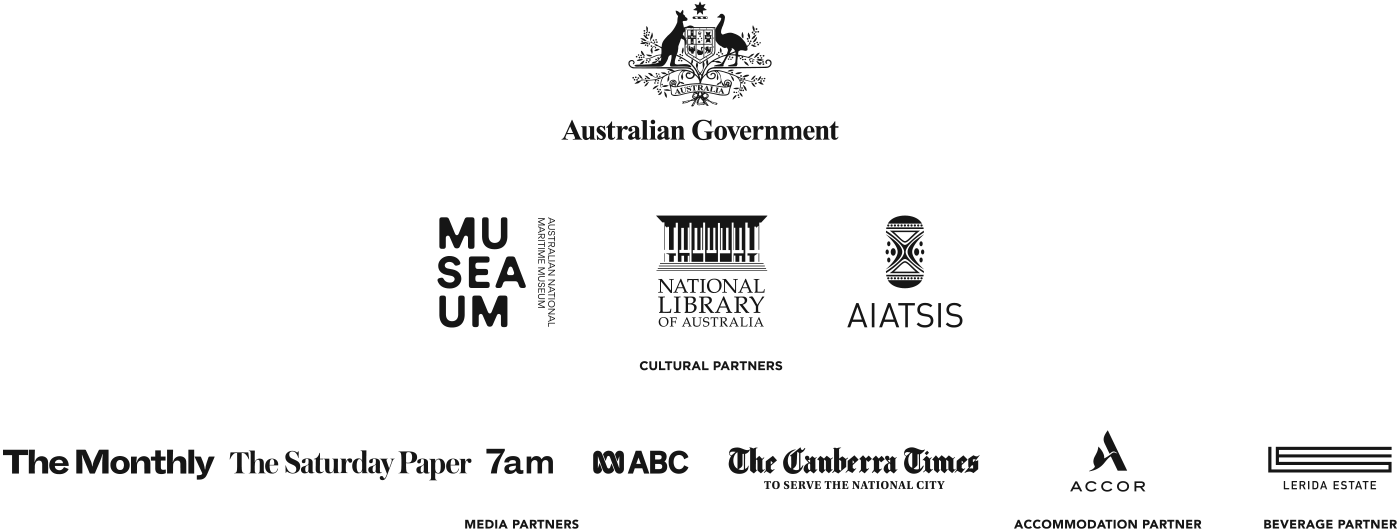
You may also like
The National Museum of Australia acknowledges First Australians and recognises their continuous connection to Country, community and culture.
Aboriginal and Torres Strait Islander people should be aware this website contains images, voices and names of people who have died.
Popular searches
Popular pages.
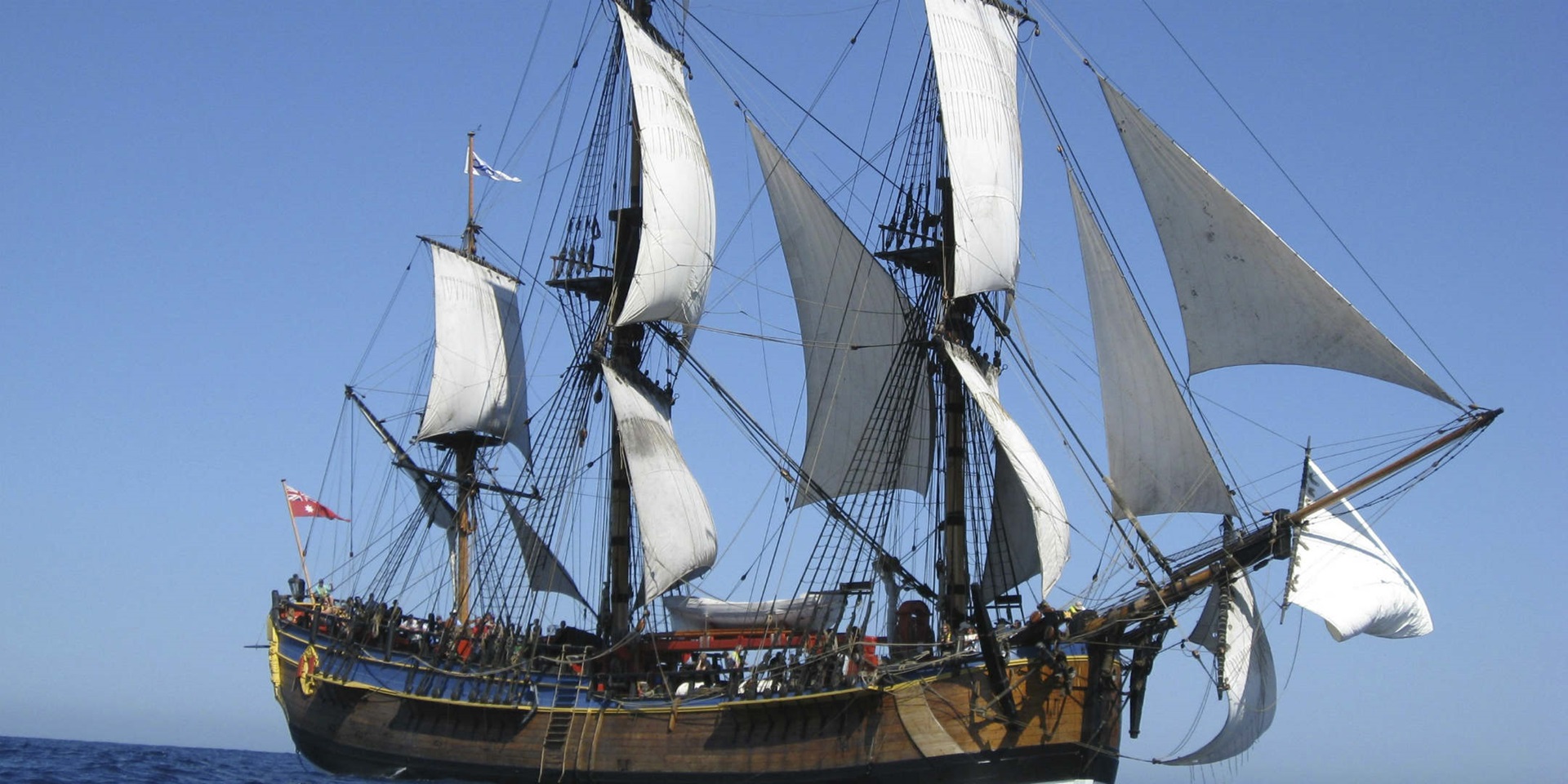
HMB Endeavour
Please note: Due to the movement of vessels, the HMB Endeavour replica will be closed to the public on Friday 9th and Wednesday 21st of August.
Please speak to our friendly staff for more information and suggestions of other vessels and exhibitions to visit.
The Australian-built replica of James Cook's HMB Endeavour is one of the world's most accurate maritime replica vessels.
When you come on board you may wonder whether James Cook and his crew have just stepped ashore somewhere on their voyage. The table is set , clothes are hung and the cat is slumbering.
On board the beautifully crafted ship, you glimpse a sailor's life during one of history's great maritime adventures, Captain Cook's epic 1768-71 world voyage. Look and you'll see almost 30 kilometres of rigging and 750 wooden blocks or pulleys! The masts and spars carry 28 sails that spread approximately 10,000 sq feet (930 m2) of canvas.
In the galley below is the huge stove, called a firehearth - state of the art in 1768. The Great Cabin is where Cook worked and dined, sharing the space with famous botanist Joseph Banks , as you can see when you glance around.
Construction of the Endeavour replica began in 1988 and the ship was launched 5 years later. Since then, Endeavour has covered many nautical miles on long voyages including circumnavigating Australia three times as well as sailing to Europe, the United States and a number of other overseas ports. Hundreds of thousands of visitors have come on board to see how Cook and his men lived.
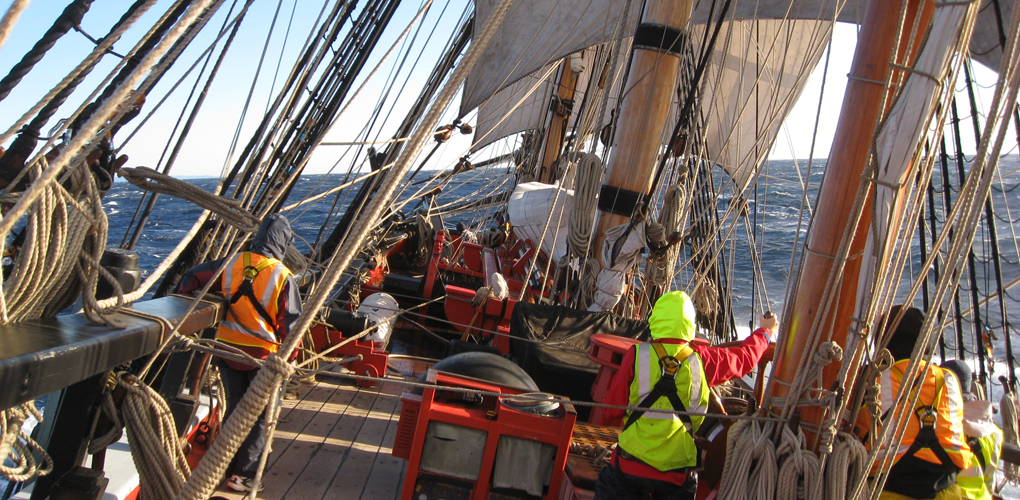
Visiting Endeavour
Most days, Endeavour stands majestically at our wharves open for visiting, but does enjoy regular trips along the Australian coast that the public can join, so be sure to check availability .
When it is out at sea, you can track the Endeavour over at marinetraffic.com (search for "HMB Endeavour ").
Sail the Endeavour
Endeavour is a fully functioning, sea-going ship and you can sail her as Voyage Crew or as a Supernumerary on 5-day and 10-day voyages at certain dates throughout the year.
Hire the Endeavour
Invite your guests to step on board the meticulous replica of Captain Cook’s famous and historic tall ship of discovery. Moored right beside the museum, HMB Endeavour is an outstanding venue for cocktails on the quarterdeck or an intimate dinner in the Great Cabin.
Search for Endeavour
Learn about the search for the HMB Endeavour - read the blog from our 2017 Rhode Island fieldwork team.
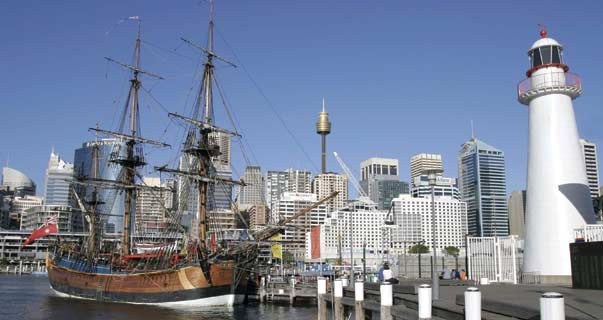
HIRE THE ENDEAVOUR
Invite your guests to step on board the meticulous replica of Captain Cook’s famous and historic tall ship of discovery. Moored right beside the museum, HMB Endeavour is an outstanding venue for cocktails on the quarterdeck or an intimate dinner in the Great Cabin.
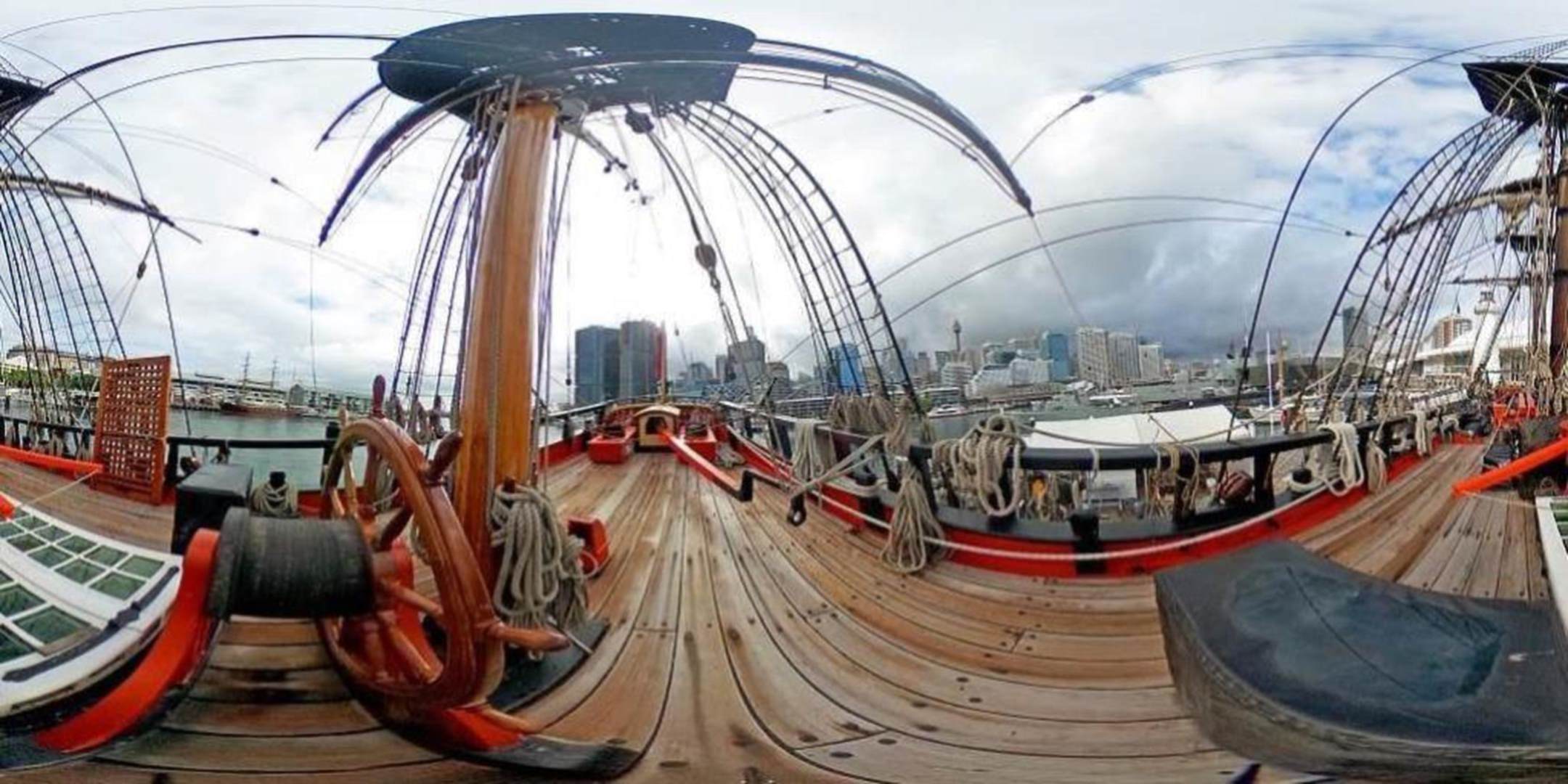
TAKE A VIRTUAL TOUR
Take a close up virtual tour
.jpg?h=720&la=en&w=1280)
Finding Endeavour
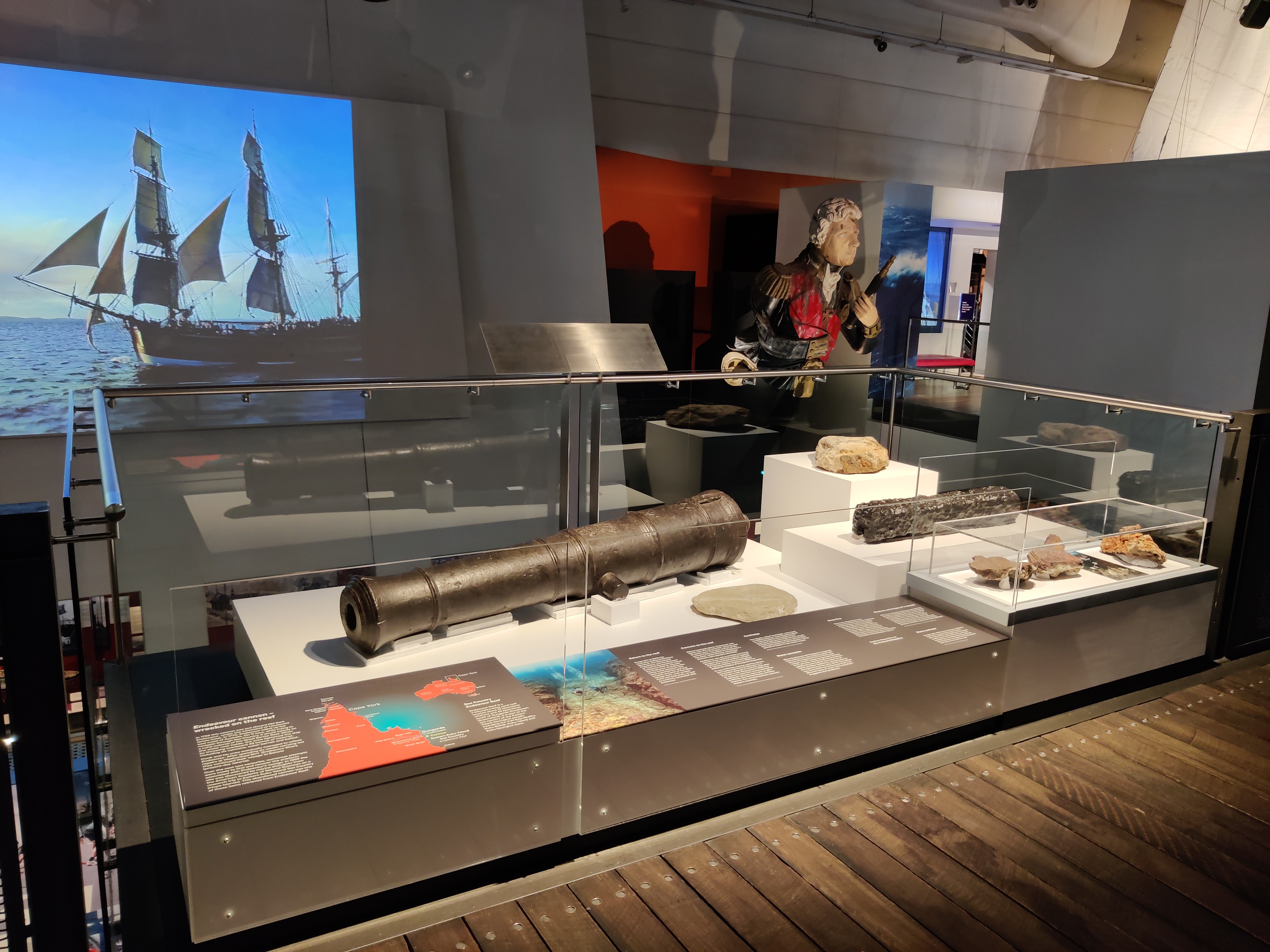
Endeavour Cannon on display
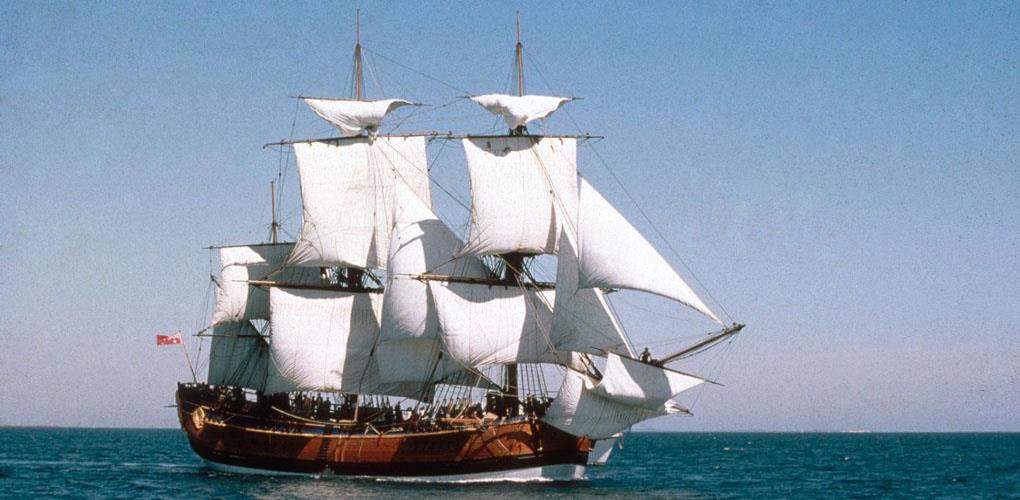
Ship specifications
Shop the Endeavour Store
Love Endeavour ? Explore our range of books and giftware relating to all things naval.
HMB Endeavour Souvenir Guide Booklet

HMB Endeavour Duffle Bag

3D model kit - HMB Endeavour
You might also enjoy these
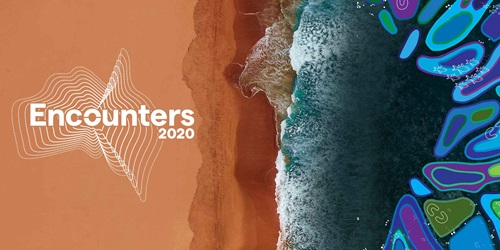
Encounters 2020
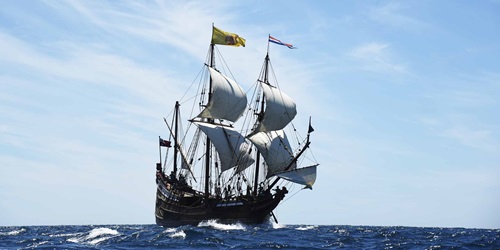
Tall Ship: James Craig 1874
Accept cookies?
We use cook ies to give you the best online experience and to show personalised content and marketing. We use them to improve our website and content as well as to tailor our digital advertising on third-party platforms. You can change your preferences at any time.
Popular search terms:
- British wildlife
- Wildlife Photographer of the Year
- Explore the Museum
Anthropocene
British Wildlife
Collections
Human evolution
What on Earth?

When the crew of HMS Endeavour arrived to observe the transit of Venus at Otaheite (Tahiti) in 1769 they established a fortified observatory known as Fort Venus
Sydney Parkinson (1773). Source: The Natural History Museum, London.
Endeavour 250: natural history through colonial encounter
In August 1768, under the command of then-Lieutenant James Cook, HMS Endeavour and her crew set sail for Tahiti to observe the transit of Venus - before opening sealed orders for a secret assignment.
The secret mission was to locate and claim the great southern landmass, so-called Terra Australis Incognita ('unknown land of the South'), for the British crown and secure any other territories they found along the way which could be useful to the Empire.
The Endeavour voyage greatly expanded Western scientific knowledge of the South Pacific and foreshadowed British colonisation in the region.
HMS Endeavour and her crew
In 1768 a refitted coal ship known as HM Bark Endeavour left Plymouth for the South Pacific island of Otaheite (Tahiti). Slow-moving and sturdy, the ship had a shallow hull that was ideal for sailing in unknown and potentially treacherous waters.
On board was a full naval complement of 85, including a dozen marines armed with gunpowder, cannons and swivel guns. There were also nine civilians, including the renowned astronomer Charles Green as well as the young naturalist Joseph Banks and his party of four servants, a secretary, two artists, a botanist and two dogs.
The wealthy 25-year-old Banks had persuaded his connections in the Admiralty to allow him on the voyage at the last minute, at his own expense.

The two artists appointed by Banks were Scottish landscape artist Alexander Buchan and Scottish naturalist artist Sydney Parkinson. Banks's secretary Herman Sporing was also an accomplished artist. To assist with collecting and identifying species Banks brought his good friend, the Swedish botanist Daniel Solander.
The success and scale of discovery recorded by Banks's group set a precedent for including artists on future voyages.
The transit of Venus
Officially, the crew of the Endeavour were to sail to Tahiti to chart the transit of Venus, which occurs when a relatively small celestial body (in this case Venus) passes across the disk of a larger body, such as a sun eclipsing a small area. This was a key phenomenon in early astronomy.
Knowledge of the precise times taken for the transit as observed from different point of Earth's surface enabled astronomers to accurately calculate the distance between Earth and the Sun.
Cook worked with the ship's astronomer Charles Green on this task.
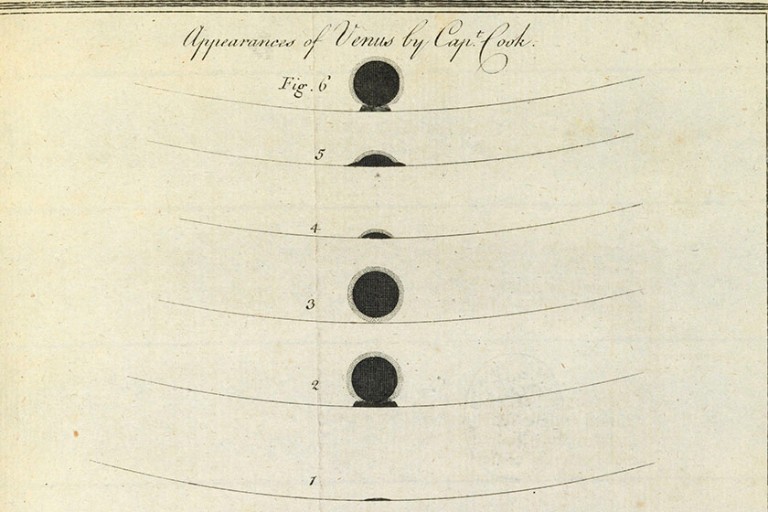
Charting the transit of Venus was a vital activity in early astronomy that allowed scientists to measure the distance from Earth to the Sun.
Transit of Venus: Cook and Green. From The Philosophical Transactions of the Royal Society, 1771. Source: The Natural History Museum, London.
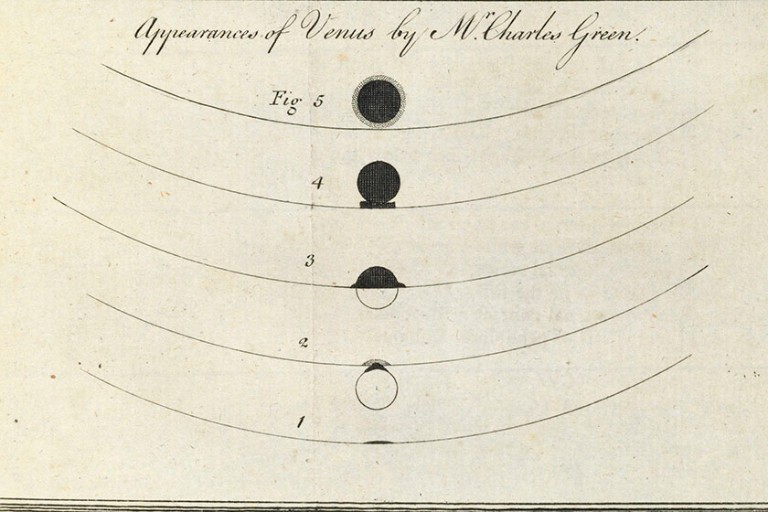
Unfortunately, cloud cover during the event made it impossible to make reliable observations.
A secret mission
Once the celestial observations were made, Cook opened the sealed orders from the Admiralty. Until that moment only he was privy to their contents.
Inside were instructions to search for and lay claim to Terra Australis Incognita, a partially charted landmass assumed to occupy much of the southern part of the globe. The transit of Venus mission was a cover for a journey to claim any promising South Pacific land for Britain ahead of rival European powers.
The plan worked marvellously.

Pencil sketch of an Epaulette shark, or Hemiscyllium ocellatum
Sydney Parkinson (1745-1771). Graphite on paper. Source: The Natural History Museum, London
Instructions from the Admiralty read:
'You are [...] to observe the Genius, Temper, Disposition and Number of the Natives, if there be any and endeavour by all proper means to cultivate a Friendship and Alliance with them, making them presents of such Trifles as they may Value inviting them to Traffick, and Shewing them every kind of Civility and Regard; taking Care however not to suffer yourself to be surprised by them, but to be always upon your guard against any Accidents.
'You are also with the Consent of the Natives to take Possession of Convenient Situations in the Country in the Name of the King of Great Britain: Or: if you find the Country uninhabited take Possession for his Majesty by setting up Proper Marks and Inscriptions, as first discoverers and possessors.
'You are also to carefully to observe the Nature of the Soil, and the Products thereof; the Beasts and Fowls that inhabit or frequent it, the Fishes that are to be found in the Rivers or upon the Coast and in what Plenty and in Case you find any Mines, Minerals, or valuable Stones you are to bring home Specimens of each, as also such Specimens of the Seeds of the Trees, Fruits and Grains as you may be able to collect, and Transmit them to our Secretary that We may cause proper Examination and Experiments to be made of them.'
Cook's interpretation of these instructions continues to be a subject of important historical and political debate.
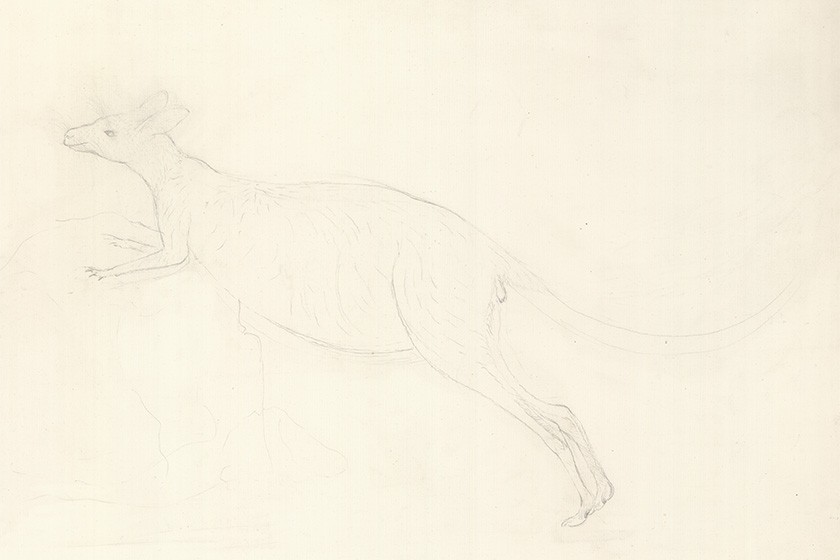
The first scientific description of a kangaroo was recorded by Daniel Solander when the Endeavour was forced to make an extended stay on the Endeavour River in Queensland to make repairs after hitting a coral reef. Linguists believe that the 'Kanguru' name which Cook recorded in his diary entry of 4 August 1770 is derived from a word in the Aboriginal language of the Guugu Yimidhirr people, whose word 'gangurru' refers to a species of kangaroo.
Unfinished pencil outline of a 'kanguru' by Sydney Parkinson (1745-1771). Graphite on paper, 1770. Source: The Natural History Museum, London.
Who discovered Australia
Australia has been continuously inhabited by Aboriginal people for 30,000-70,000 years.
European sailors first entered Australian waters in the early 1600s - they were the ones who called the unknown land mass Terra Australis Incognita. Between 1606 and 1770 more than 50 European ships had made landfall in Australia.
In 1642, Dutchman Abel Tasman mapped Van Dieman's Land, now Tasmania. On a second voyage in 1644 he encountered and charted much of the western and southern coast of present-day Australia, naming it Nova Hollandia (New Holland).
Well over a century later, on 29 April 1770, James Cook and the crew of HM Bark Endeavour landed in Botany Bay, home of the Eora people. Despite this area being populated, Cook declared the east coast of Australia Terra Nullius - 'nobody's land' - and claimed it for Great Britain.
The voyage of the Endeavour
The first stop on the way to Tahiti was Funchal in Madeira Island (off the west coast of Morocco). HMS Endeavour arrived there on 12 September 1768 and paused to take on fresh supplies before crossing the Atlantic.
During this time, Banks and Solander listed 230 plant species, 25 of which were new to Western science.
On 13 November they arrived at Rio de Janeiro, Brazil, where Cook received an icy reception from the Portuguese viceroy, who refused to allow the Endeavour to anchor in the harbour. Portugal and Great Britain were competing European naval and colonial powers.
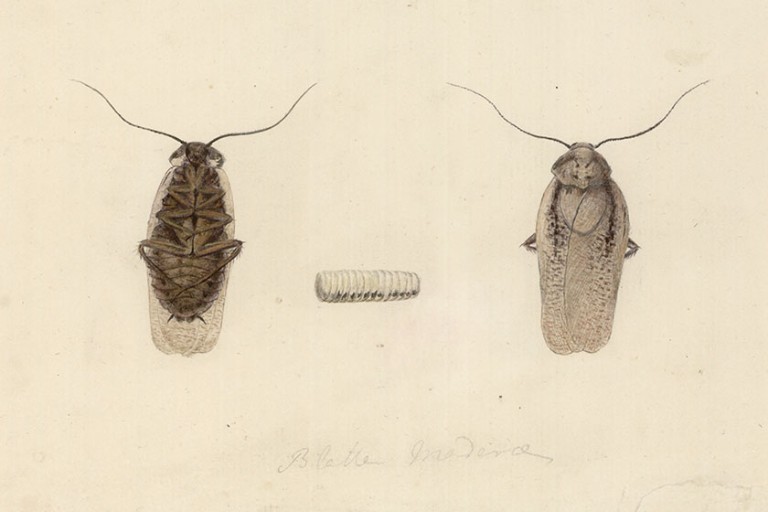
Watercolour illustration of a Madeira cockroach Rhyparobia maderae . Cockroaches, lice, rats and maggots carried disease and could wreak havoc on the ship's food supplies. The artist, Alexander Buchan, died as a result of an epileptic seizure only eight months into the voyage.
Alexander Buchan (d 1769) Watercolour on paper, c 1768 -1769. Source: The Natural History Museum, London.
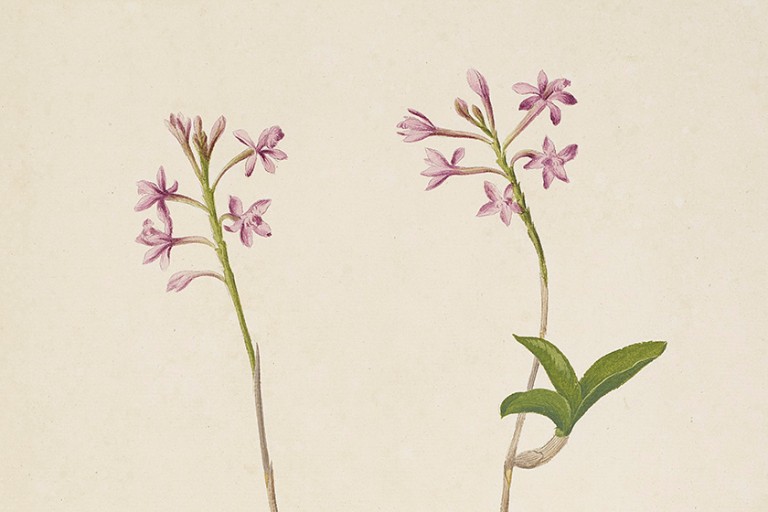
Despite the restriction put in place by the Viceroy, members of the crew went ashore at night in small boats. Wiñay wayna ( Epidendrum secundumI ) is an orchid found in montane forests in Central and South America.
Sydney Parkinson (1745-1771). Watercolour on paper, 1768. Source: The Natural History Museum, London.
The diaries of both Cook and Banks offer a thorough reconnaissance of the region's natural resources and trade, and the harbour's defensive structures.
From Rio, the ship sailed to the Strait of Le Maire (at the southern tip of Argentina) and landed shore parties in Tierra del Fuego before passing the treacherous southernmost point of South America, Cape Horn.
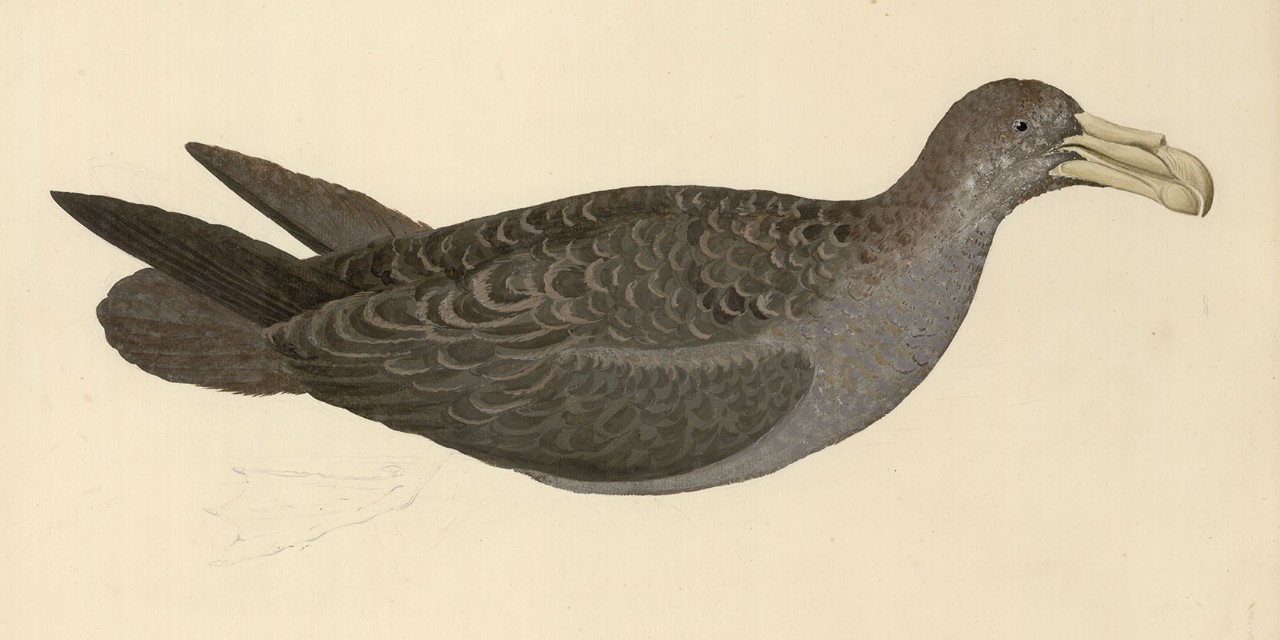
Southern giant petrel Macronectus giganteus . Parkinson undertook this illustration of a southern giant petrel on 23 December 1768 en route to Tierra de Fuego near the southern tip of South America. Parkinson never completed the drawing but added a note saying that 'the feet are grey'.
Tahiti, April-July 1769
The Endeavour entered the Pacific in late January 1769 and arrived on 13 April at Matavai Bay, Tahiti, seven weeks before the transit of Venus was due to occur. Tahiti had only been plotted on Western maps the year before.
The crew erected fortifications and forged relationships with the inhabitants for the supply of food and local knowledge of the region.
One of the most important relationships was with Tupaia , a Polynesian navigator and Arioi (a Māori spiritual figure), who voluntarily joined the Endeavour voyage in Tahiti.
Cook, Banks and his retinue drew heavily on Tupaia's skills as a navigator, translator and local guide to map the region and identify new species and potentially useful resources.
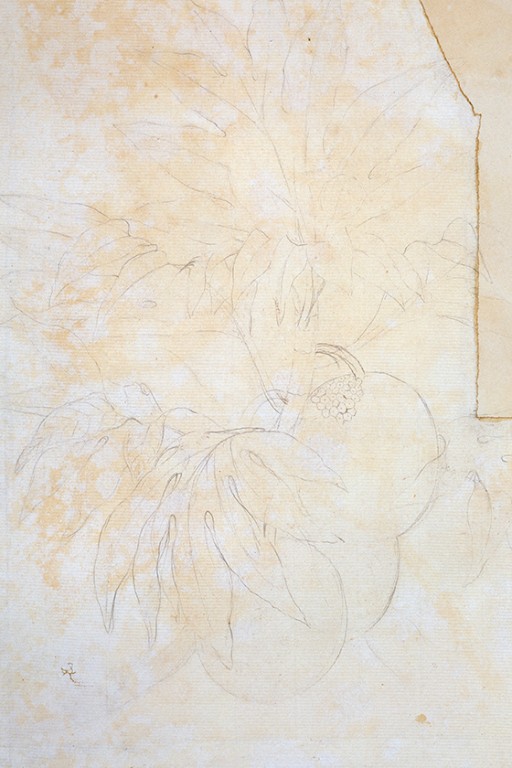
Unfinished sketch of the foliage and fruit of the breadfruit tree Artocarpus altilis . Specimens and sketches were also taken of the sweet potato (Tahiti) and taro (Australia).
Sydney Parkinson (1745-1771). Graphite on paper, c 1769. Source: The Natural History Museum, London.
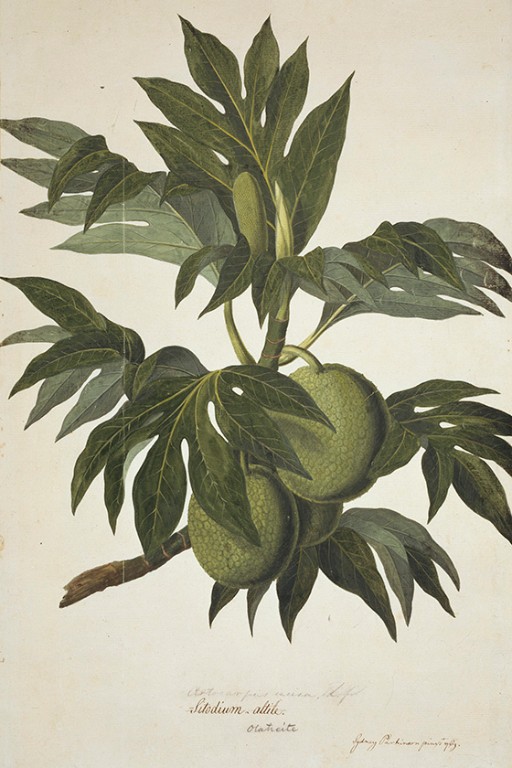
Finished watercolour of the foliage and fruit of the breadfruit tree Artocarpus altilis . Joseph Banks recognised the potential of breadfruit as a cheap food crop to feed enslaved people in other tropical areas. He proposed to King George III that a special expedition be commissioned to transport breadfruit plants from Tahiti to the Caribbean. For this, William Bligh took command of the notorious HMS Bounty in 1787.
Sydney Parkinson (1745-1771). Watercolour on paper, 1769. Source: The Natural History Museum, London.
The search for the southern land, July-October 1769
Working with incomplete maps created by the explorer Abel Tasman more than 100 years before, in mid-July 1769 Endeavour sailed south in search of Terra Australis Incognita.
The course was far from smooth. With no preset destination, the exploratory voyage zigzagged around the area - according to a map pencilled in Cook's own hand, it even made at least two complete loops. From the Society Islands they travelled south, then north-east, then north-west and east again.
Having still encountered no major land mass, the crew turned south-west again and encountered the eastern coast of New Zealand on 7 October.
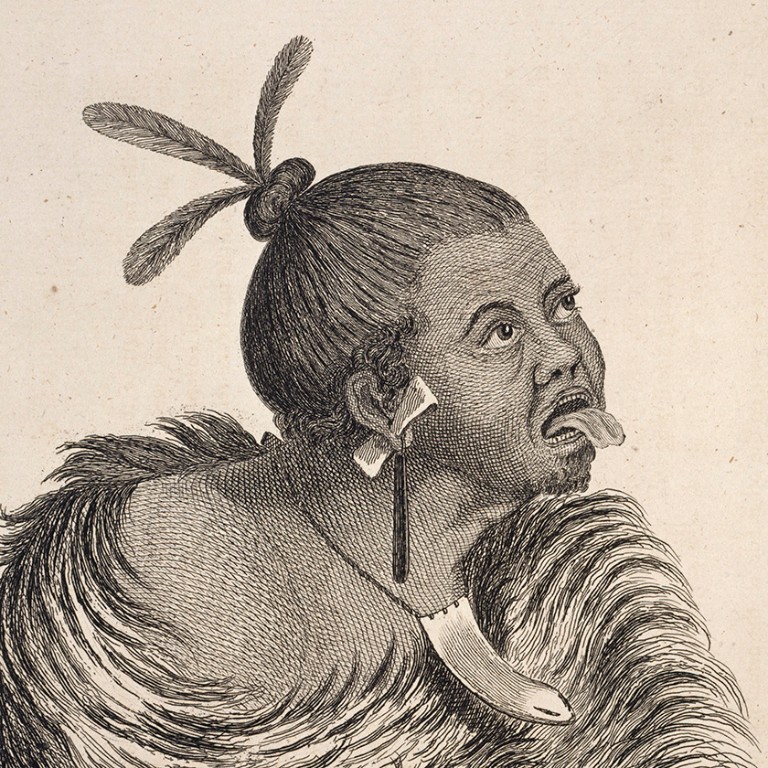
Sydney Parkinson was fascinated by the people he encountered during the voyage. His journals document many cultural aspects of Indigenous People, including languages and customs. He was particularly interested in the Māori warriors he encountered and their method of tattooing.
Engraved plate from A Journal of a Voyage to the South Seas in His Majesty's Ship the Endeavour [1768-1871] … by Sydney Parkinson (1773). Source: The Natural History Museum, London.
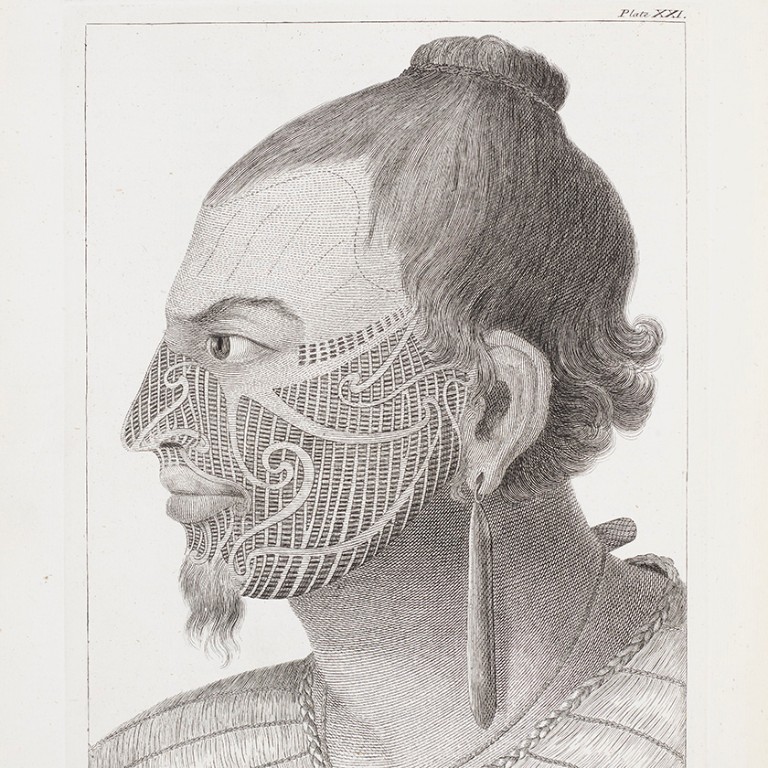
Head of Otegoongoon, son of a New Zealand Chief, with details of his tattoos
Engraved plate from A Journal of a Voyage to the South Seas in His Majesty's Ship the Endeavour [1768-1871] … by Sydney Parkinson (1773) Source: The Natural History Museum, London.
New Zealand, October 1769 - March 1770
Cook took a very thorough approach to charting New Zealand, sailing anti-clockwise around the North Island then through Cook Straight and then clockwise around the South Island.
The crew also made several short land excursions along the way, many of which did not go according to plan.
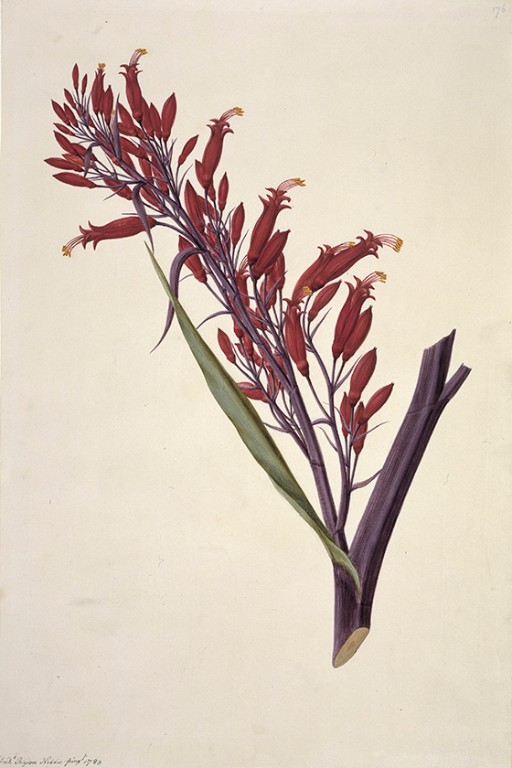
Parkinson died six months before Endeavour returned to England, so Banks employed a team of artists, including Frederick Nodder, to complete watercolours of Parkinson's unfinished sketches. Nodder completed this watercolour of New Zealand flax ( Phormium tenax ) based on sketches by Parkinson and the specimens collected by Banks and Solander. New Zealand flax, known to Māori as harakeke, was used to create clothing, rope and tools.
Frederick Nodder (fl 1770 - c 1800). Watercolour on paper, 1783. Source: The Natural History Museum, London.
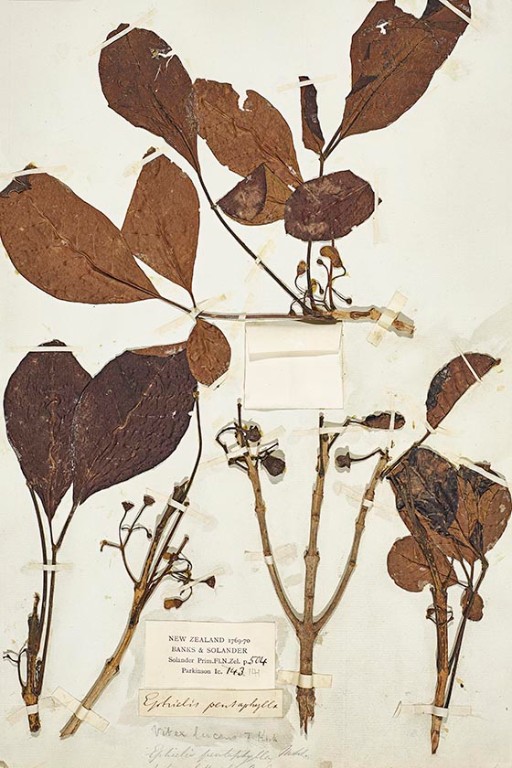
Herbarium sheet of puriri ( Vitex lucens ) collected by Banks and Solander. Puriri is an evergreen tree endemic to New Zealand and provides some of the strongest wood available in the country. Puriri trees or groves were sometimes considered tapu (taboo) due to their link with Māori burial customs. European settlers used great quantities of the timbers for fence posts, house and ship building.
Source: The Natural History Museum, London
Within half a day of Cook landing in New Zealand, the first Māori had been shot. Many more deaths by musket fire followed.
Deaths and misunderstandings continued until Cook forcefully acquired two young hostages and plied them with gifts of beads, ribbons and nails in order to establish the crews friendly intentions. At this time Tupaia's invaluable role as translator really came to the fore and Cook was able to establish a wary alliance with the locals.
Taking hostages would become Cook's go-to diplomatic method in the region. This was an effective tactic for Cook until his third visit to Hawaii in 1779 when Indigenous warriors retaliated during the attempted abduction of their chief, leading to Cooks death.
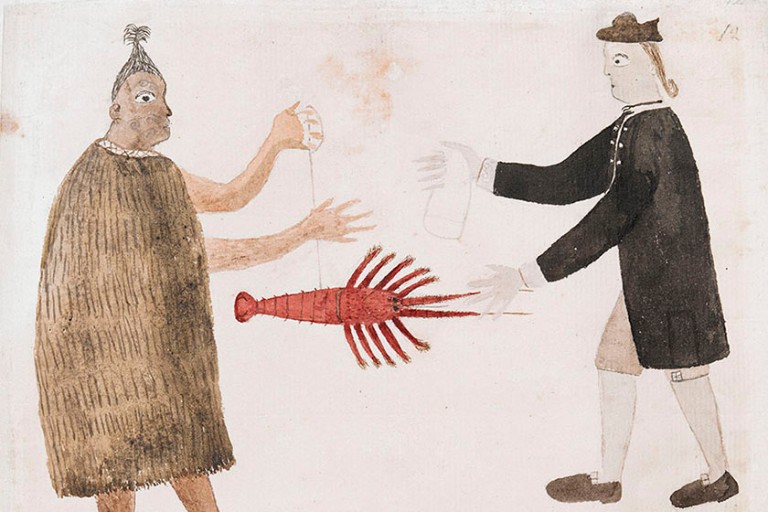
This watercolour on paper, is attributed to Tupaia and depicts a Maori and Joseph Banks trading a crayfish for a piece of cloth
Tupaia, 1769 © British Library , Add MS 15508, f. 12
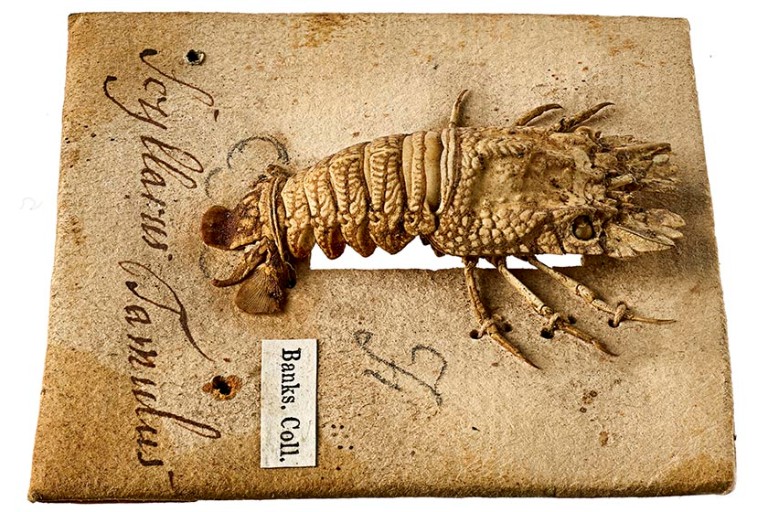
This pygmy slipper lobster Biarctus sordidus was collected by Joseph Banks while on board the Endeavour
HMS Endeavour departed New Zealand on 31 March 1770 and was subsequently remembered by Māori as 'Tupaia's ship'. The British Library has compiled responses to the arrival of the Endeavour from across the Pacific .
East coast of Australia, April-October 1770
The Endeavour headed west again, bound for the uncharted eastern coast of Australia to pick up where Abel Tasman had left off more than a century earlier.
After weeks at sea, the ship finally arrived at the southeast tip of the continent on 19 April 1770, having sailed north for more than 3,200 kilometres (2,000 miles) along the east coast of Australia.
During the trip, many fruitful land excursions were made, one of the best known being in present-day Sydney, then called Botany Bay - so-named for the abundance of new plants collected there.
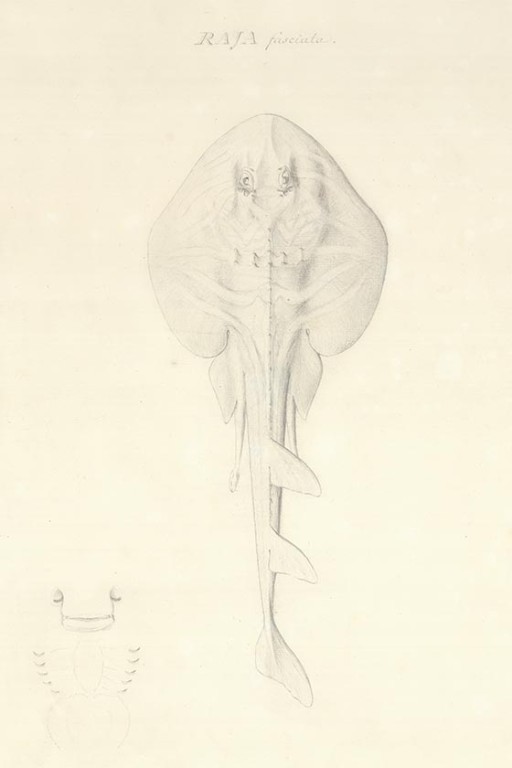
Trygonorrhina fasciata . According to Cook's journal, the first name given to the region that would be named Botany Bay was Stingrays Harbour, after the quantity of rays they encountered there. It was later renamed Botany Bay for the many plants found there by Banks and Solander.
Herman D Sporing (1733-1771). Watercolour on paper, c 1770. Source: The Natural History Museum, London.
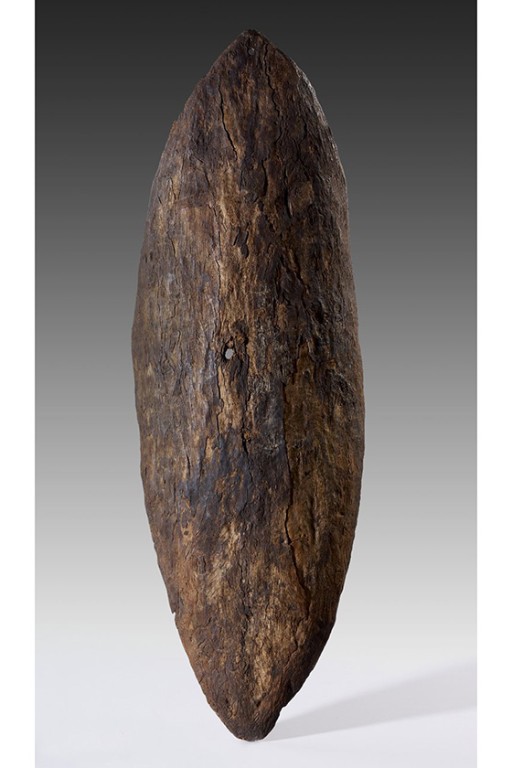
This undecorated Gweagal shield, made of long-style stilt mangrove ( Rhizophora stylosa ) with a pierced hole near the centre, may have been obtained by Captain Cook on 29 April 1770 at Botany Bay. In his journal, Cook writes: 'Defensive weapons we saw only in Sting-Rays [Botany] bay and there only a single instance - a man who attempted to oppose our Landing came down to the Beach with a shield made of the bark of a tree; this he left behind when he ran away and we found upon taking it up that it plainly had been pierced through with a single pointed lance near the centre.' The shield has become a symbol of Aboriginal resistance to European settlement. The Australian Museum has more information on the origins of this shield .
Made by an unknown aboriginal Australian © CC BY-NC-SA 4.0 The Trustees of the British Museum
Banks and Solander collected new material there almost every day, and Parkinson drew more than 400 sketches of plants while the ship was in Australian waters.
Thanks to Banks and Solander's prolific botanical collecting, Parkinson made detailed outline sketches with colour references of each plant, for later completion.
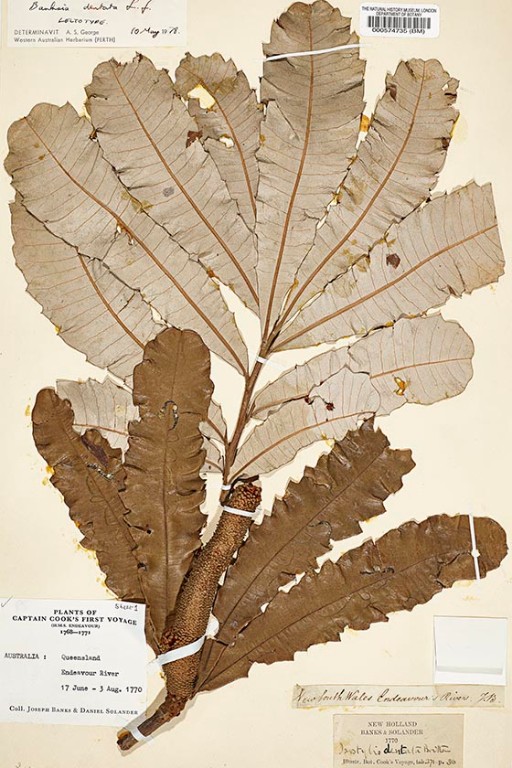
The original herbarium sheet for Tropica banksia collected by Daniel Solander. Eminent taxonomist Carl Linnaeus was so impressed with the scale of discoveries made by Banks and his party that he proposed that New South Wales should be named Banksia in his honour. Instead, the name Banksia was given to genera and species of plants.
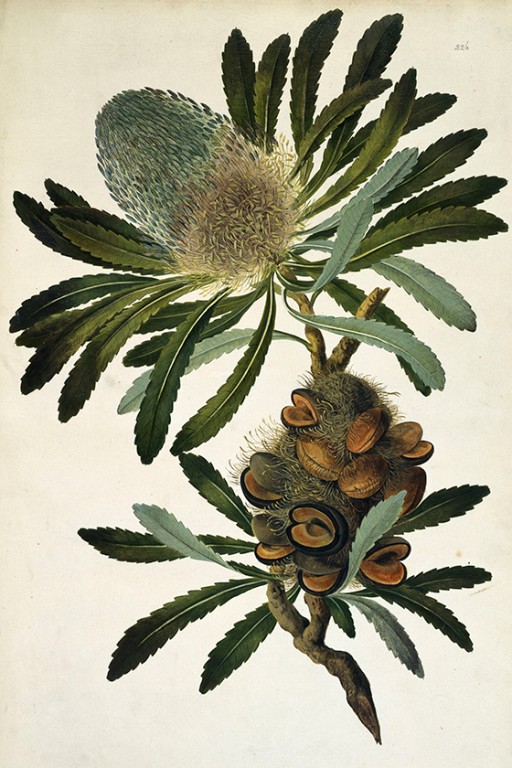
Old man banksia, or Banksia serrata . Parkinson included the note 'Mem. the space below the flowers to be fill'd up wt dark colour' on his outline drawing of this plant which he undertook in Botany Bay. The finished watercolour was completed by John Frederick Miller following the Endeavour's return to England.
John Frederick Miller (1759-1796). Watercolour on paper, 1773. Source: The Natural History Museum, London.
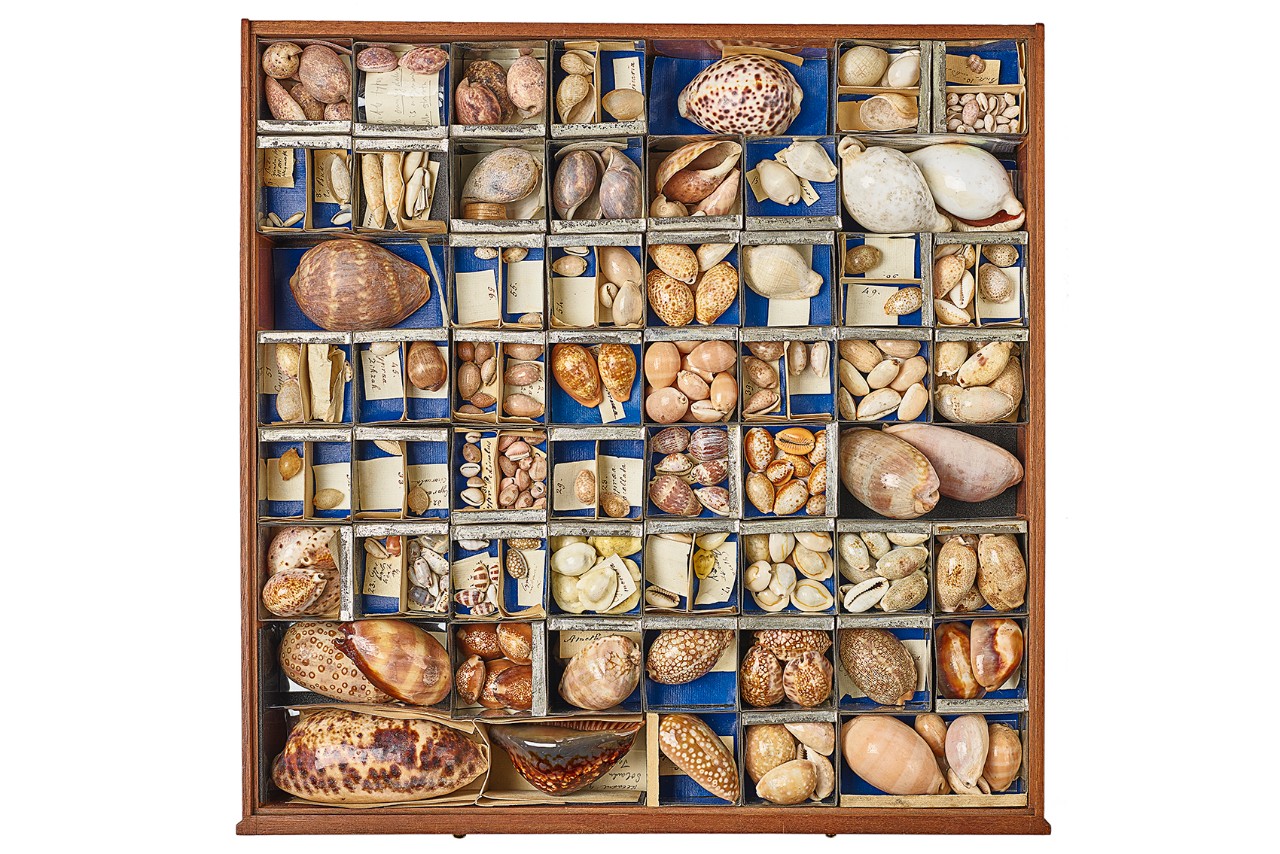
Once strewn across the beaches of Brazil, Tahiti, New Zealand and Australia, these shells are among those collected by Banks during the HMS Endeavour expedition (1768–1771).
Sir Joseph Banks' shells, drawer 6, cowrie collection. Source: The Natural History Museum, London
Cook and his crew met few Aboriginal people on Australia's eastern shoreline, but were fully aware of their presence when they claimed the eastern coast for Britain.
Journals entries from those on board the Endeavour mention Aboriginal people lighting warning fires along the coast to alert other communities of the approaching danger.
Loss and legacy
HMS Endeavour arrived at the English port of Dover on 12 July 1771. The crew had been sworn to secrecy about all they had seen.
On the last leg home, from Batavia (now Jakarta, Indonesia), thirty crew members including Sydney Parkinson and Charles Green died of ship-borne illnesses including fever, dysentery and malaria.
Cook received high praise from the Admiralty for the many achievements of the voyage and was promoted to the position of commander.
The resulting natural history collection included more than 1,000 species of plant previously unknown in Europe. Banks, Solander and their colleagues became the toast of the London scientific community.
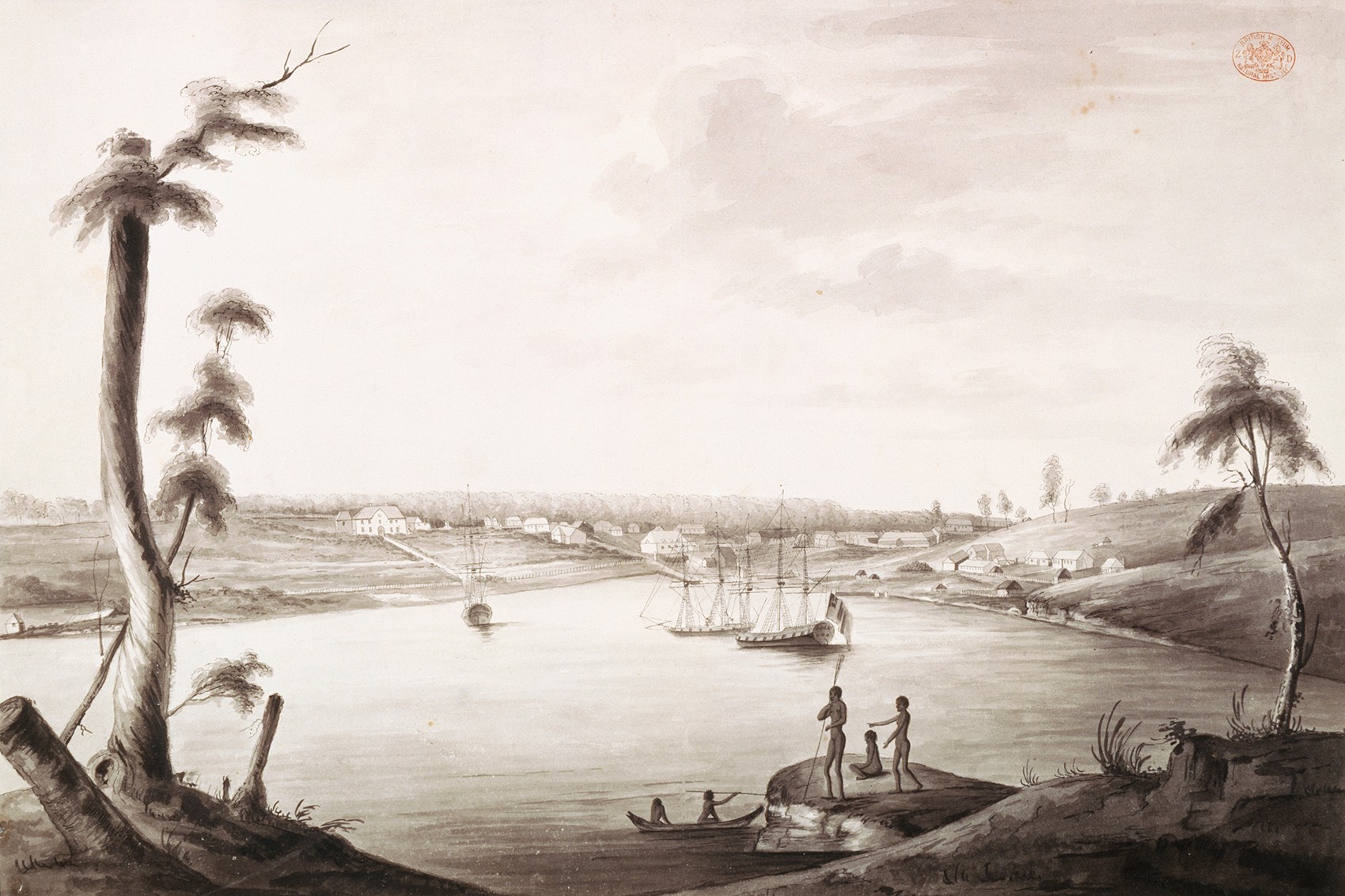
This early picture of Sydney Cove through European eyes shows Aboriginal inhabitants in the foreground, set against a backdrop of the early penal colony. It is part of a series by early Australian illustrator Thomas Watling, a convict sent to Australia for art forgery with the first fleet.
Thomas Watling, 1792-1797. Source: The Natural History Museum, London
Joseph Banks became one of the most influential scientists of his day, and was appointed as King George III's advisor for the Royal Botanic Gardens at Kew, sending botanists around the world to collect plants on his behalf.
Banks was also highly influential in the decision to establish a British penal colony at Botany Bay in New South Wales. He was made a baronet in 1781 and a Knight Commander of Bath in 1795 for his patronage of natural science.
After his death in 1820, the priceless collection of illustrations and specimens from the Endeavour voyage were left to the Natural History Museum - then the British Museum (Natural History) - where they continue to be cared for today.
- Museum history
- Expeditions

Endeavour Illustrations
Explore original botanical drawings and engravings prepared by Sydney Parkinson aboard the Endeavour, as well as those completed after his death by artists back in England.
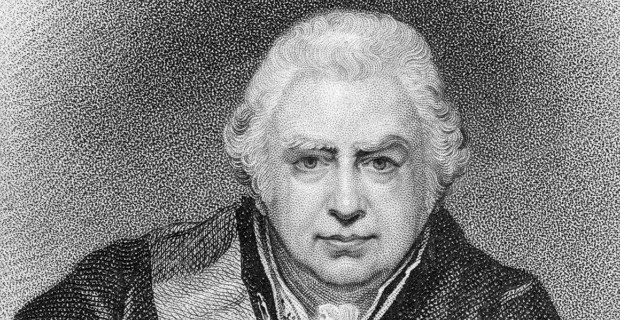
Joseph Banks: scientist, explorer and botanist
Meet eighteenth-century naturalist and collector Sir Joseph Banks.
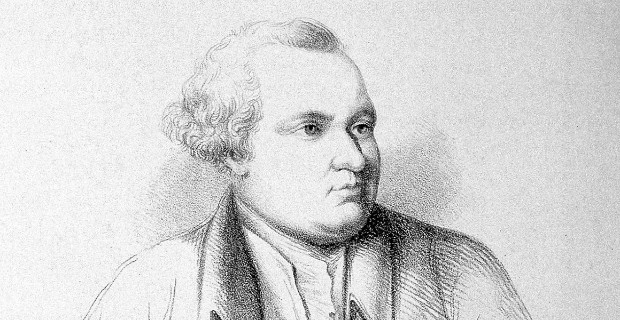
Daniel Solander: a Linnaean disciple on HMS Endeavour
Meet the Swedish botanist who ventured around the world on Captain Cook's pivotal first voyage.
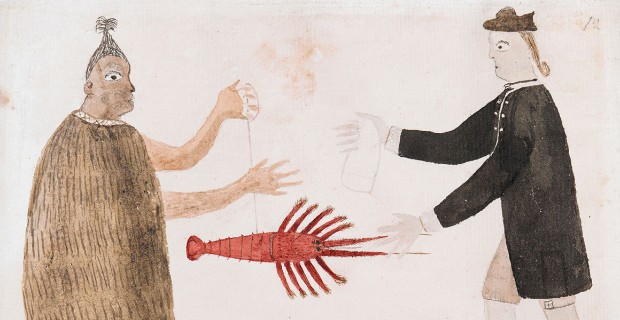
On tour with Tupaia
This charismatic Polynesian turned Cook's first voyage into his own ceremonial tour.
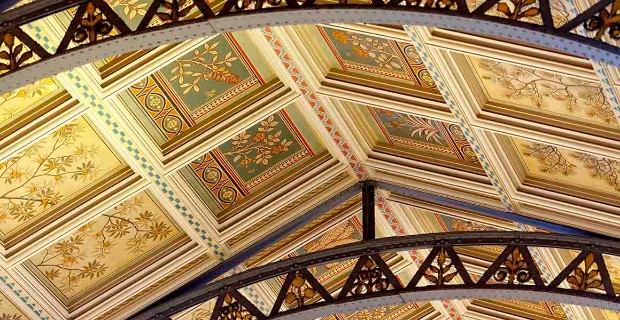

Are natural history museums inherently racist?
How these institutions now engage with their history is crucial in how they move forward.
Don't miss a thing
Receive email updates about our news, science, exhibitions, events, products, services and fundraising activities. We may occasionally include third-party content from our corporate partners and other museums. We will not share your personal details with these third parties. You must be over the age of 13. Privacy notice .
Follow us on social media
- Science & Environment
- History & Culture
- Opinion & Analysis
- Destinations
- Activity Central
- Creature Features
- Earth Heroes
- Survival Guides
- Travel with AG
- Travel Articles
- About the Australian Geographic Society
- AG Society News
- Sponsorship
- Fundraising
- Australian Geographic Society Expeditions
- Sponsorship news
- Our Country Immersive Experience
- AG Nature Photographer of the Year
- View Archive
- Web Stories
- Adventure Instagram
The journey to find the Endeavour

IN 22 AUGUST 1770, the crew of HMB Endeavour, led by Lieutenant James Cook, reached Possession Island, off the northern tip of Australia.
From there they sailed west to the Dutch colony of Batavia for repairs, before making the long journey home. Cook’s time in Australia was over, and although he would lead two more voyages of discovery, Endeavour was in a woeful state and no longer suitable to meet the rigours of such journeys.
Endeavour’s stint in Australia is well documented, but what is less known is what happened after its return to England. A surprising chain of events saw it caught up in the 1775–1783 American War of Independence, and it eventually ended up on the murky sea floor of a historic harbour in Rhode Island, USA, where what remains of it still resides.

Between 1771 and 1774, the Royal Navy used Endeavour to shuttle goods and troops to the British garrison on the Falkland Islands, off Argentina. But in 1775, after the battered vessel was sold to private owner James Mather for £645, it disappeared from naval records, confounding historians.
The story long believed to be true was that Endeavour was renamed La Liberté and that it arrived in Rhode Island in 1793 as part of a French whaling fleet. The remnants of La Liberté disappeared long ago beneath land reclaimed as a parking lot, but its stern post, thought to be that of Endeavour, arrived in Australia for the bicentenary in 1988. It remains on display at the Australian National Maritime Museum (ANMM).
In 1997, however, Australian amateur historians Des Liddy and Mike Connell uncovered clues in a shipping register that Endeavour was, in fact, renamed Lord Sandwich and that La Liberté was actually HMS Resolution, which Cook sailed on his second and third voyages.
Subsequent sleuthing through historic records by experts including Dr Kathy Abbass, director of the Rhode Island Marine Archaeology Project (RIMAP), has painted a remarkable picture of Endeavour’s final years as Lord Sandwich, including its role as a troop transport, shipping German Hessian mercenaries who hailed from the southern German province of Hesse-Cassel, to America to fight for the British.
By August 1778, she was being used as a prison hulk holding American revolutionaries in Rhode Island’s Newport Harbour. The French had by then entered the war on the side of the Americans, and with a fleet of their warships poised to take Newport, Lord Sandwich was among 13 vessels deliberately sunk in formation by the British to block access to the harbour.

It’s now 240 YEARS LATER, and on an unseasonably warm October day in 2018, Kathy Abbass perches on a chair on the waterfront of Newport’s Goat Island. She looks out at buoys bobbing in the wide, grey expanse of the harbour. A suspension bridge stretches across Narragansett Bay behind her.
“When the British knew the French were coming, they told the navy vessels to destroy themselves,” says Kathy, who is at once knowledgeable and formidable.
“Thirteen were sunk in a line here on the west side of Goat Island,” she adds, gesturing towards the buoys that mark RIMAP’s dive sites and the five wrecked vessels thought to include Lord Sandwich (formerly Endeavour).
There are more than 230 historic wrecks in this important colonial harbour. Kathy formed RIMAP in 1993 to study some of the wrecks of those involved in the American Revolution. She was not seeking Endeavour – in fact, as an American, it was barely on her radar.
But once the Australian enthusiasts presented her with the first clue that Endeavour might lie among the 13 vessels RIMAP was investigating, she pulled together a small amount of money to get to London. There, she found the chain of evidence to prove that Lord Sandwich was the same vessel that had been around the world with Cook in 1768–71.
“I didn’t stand up in the reading room of the Public Records Office and scream ‘I found it!’, because you don’t do that, but it was exciting,” she says.
“How many people in their career overturn an idea that has been around for 170 years?”
In the 18th century it was very common to rename vessels, as Mather did with Endeavour after he purchased it. Indeed, that was the second time the vessel had been renamed – its life began in 1764 in Whitby, Yorkshire, as the Earl of Pembroke, where it toiled as a collier transporting coal.
Both Kathy and Kevin Sumption, the director of Sydney’s ANMM, believe the later renaming was to curry favour with John Montagu, the fourth Earl of Sandwich, who was Britain’s First Lord of the Admiralty and a patron of Cook’s voyages.
“It was a ploy to take a vessel in very poorly condition and play on the pride and ego of Lord Sandwich himself,” Kevin says. After the outbreak of war in the American colonies in 1775, the British government was desperate for civilian ships to help it transport troops to quash the rebellion. Endeavour was tendered for consideration but initially rejected.
“The guy who sent Cook around the world was the fourth Earl, so I’ve always assumed it was renamed Lord Sandwich sucking up to him,” Kathy says.
Whether it was that or the repairs that eventually swung it, the ship was accepted for service in February 1776 and three months later was carrying more than 200 Hessians on a crossing to the Americas.
There are several reasons why this information was lost in the mists of time. For a start, when Lord Sandwich arrived in Rhode Island, people may have had no idea it was the vessel that had sailed to Australia – the 18th-century equivalent of having flown to the Moon. Things were valued differently then. “It was more of the cult of the individual,” Kevin says. “It was, in fact, [botanist] Joseph Banks who was lauded on their return and Cook’s fame comes a little later. The ship itself was more incidental.”
The fact significant ships sometimes dropped into obscurity, combined with confusion made by frequent renaming, creates a mess for modern historians to unravel. “It becomes a bit of a melange of stories that researchers must pick apart, using archival evidence and first accounts, to get to something like a truth – rather than just trading on the mythologies,” Kevin says.
In this case, the research proved that the stern post on display at the ANMM was not that of Endeavour, but instead belonged to Resolution. “This taught us to meticulously research and not to be so gung-ho as to make claims that won’t stand up to testing,” Kevin says, explaining that it is exactly that careful approach that RIMAP and the ANMM are now taking with a wreck off Goat Island that they increasingly suspect is Endeavour.
Since 1999 the ANMM has been an enthusiastic supporter of Kathy’s research, in the past five years helping RIMAP with archival work and providing a grant that supports dives on the wreck sites each summer. The museum’s maritime archaeologists also now fly from Sydney to participate in the dives.
After establishing RIMAP, but before finding evidence that Lord Sandwich was Endeavour, Kathy says she’d had a crisis of confidence. “About five to six years in, I started to think ‘this isn’t generating money, it doesn’t pay a living wage, why am I doing this?’” But finding the documents in 1999 that proved
Endeavour was in Newport and might be found made her persevere. That was 20 years ago. For 16 years, they did work to pick away at which of the 13 might be Endeavour, but progress was slow – dives are restricted to short summer seasons and RIMAP is a volunteer organisation that scrapes by on small grants and donations.
“We are coming closer to saying we’ve found it, but we still have to prove it,” Kathy says. Improvements in technology – such as remote sensing and photogrammetry, which have been used to stitch together thousands of photos to create detailed 3D reconstructions of wreck sites – helped, and by 2016 they’d mapped out eight of the 13 wreck sites.
That’s when they had an incredible stroke of luck that helped narrow their search. In the 1700s, it was standard after a scuttling for a surveyor to record the precise locations of where ships went down. In 2016 the ANMM’s head of research,
Dr Nigel Erskine, was scouring historic records at the National Maritime Museum in Greenwich, London, when he found just such a report. It was critical in identifying the position of Lord Sandwich as being among a group of five of the 13 vessels to the north-west of Goat Island.
“That particular document was very important because it had names of the vessels and where they were sunk,” Kathy says. “It eliminated eight of the others and allowed us to focus on the five in the area where we know Lord Sandwich was put down.”
Within this group, they suspected HMB Endeavour, a 368-tonne vessel, was likely to be at least a third bigger than any of the other transports. “So, if we can find everything in this study area, and say which is the biggest, then that’s likely to be Endeavour,” Kathy says.
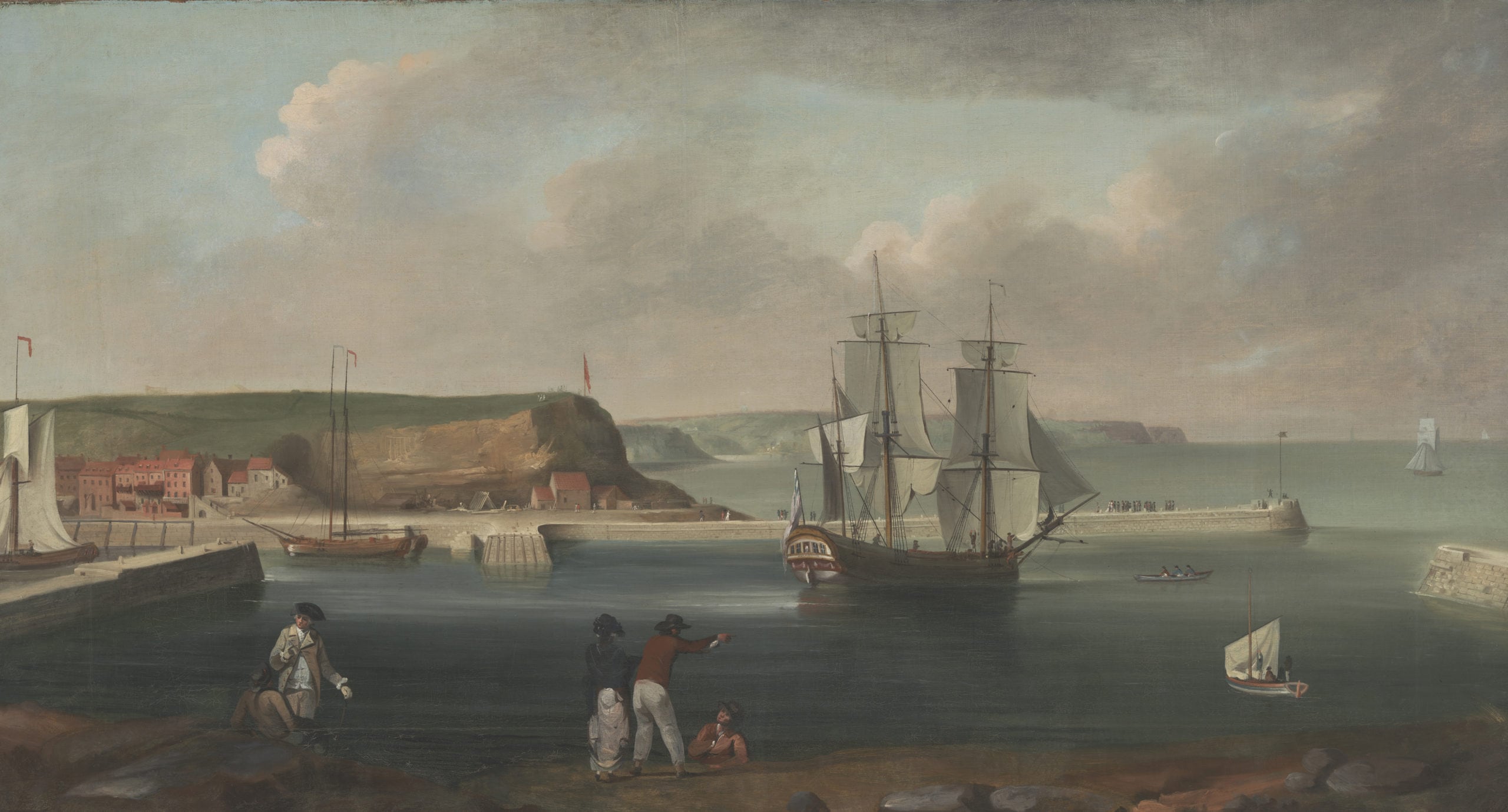
In 2018 the RIMAP and ANMM teams spent a week diving a promising site dubbed RI 2394 that they believe might be the wreck of the largest of the five vessels. But diving here, studying, and even just finding the wrecks, is difficult because visibility is poor and most of what remains of the 240-year-old wrecks is buried beneath the muddy seabed.
“It doesn’t look like much at all,” says ANMM maritime archaeologist and curator Dr James Hunter. “It doesn’t look anything like a ship. The average punter would swim right by.”
Unlike the gin-clear waters of the Caribbean or Coral seas, they’re lucky to see further than 2m in Newport, but James loves working there, nonetheless.
“Any day I get to dive on a shipwreck is a good day,” he says. “Every wreck has its own unique challenges and this one is no different – it’s a bit dark, a bit chilly, a bit deeper than many others, but very exciting.”
Cannons covered in dense marine growth and mineral concretions are the only thing that might hint at a shipwreck to the casual observer, and they are what led to the discovery of RI 2394 and then its mapping in 2007. But if you get a little bit deeper, buried in the silty mud, in an environment starved of oxygen, are the remains of the hull structure, consisting of perhaps 10–20 per cent of the original ship.
Because visibility is poor, photogrammetry has been critical as it allows the team to create digital models of the site that reveal the whole picture, allowing them to find clues to beams and other details of the ship’s structure. “When you get a model like that you can pull back and see the whole thing… It was a eureka moment,” says James.
Despite the fact the ANMM would dearly like to find
evidence that this wreck is Endeavour during 2020 – to coincide with events marking 250 years since Cook arrived in Australia – there’s no guarantee yet they have the right ship.
“What we’re dealing with is what we can see above the surface of the silt. So we chose the largest wreck that was exposed the most, that had timbers on it, that had some cannons exposed,” says Kevin. “But the next site over could be the same size or more covered over… There are all sorts of ways this might work out.”
Kathy is often asked if the plan is to raise the wreck, but this is very unlikely. “Raising vessels is very expensive and is inappropriate. UNESCO says that’s not the best use of a shipwreck anyway,” she explains, adding that a complete excavation is not needed to prove this is Endeavour, and would expose it to oxygen and marine life that would degrade it.
“Our approach is to just open it up enough to get the data we need and take care of the artefacts that are there,” she says. Leaving at least half the wreck undisturbed also means that, in the future, archaeologists with better technology and better knowledge can come back and make discoveries that wouldn’t be possible today.
Instead, the plan is to find a variety of clues indicating that this is Endeavour – but the chance of her still containing any artefacts associated with Cook is very low. “Our assumption is that it is the later uses of the vessel as the Lord Sandwich – the transport, her involvement in the Revolutionary War, holding prisoners onboard – that are most likely to provide the evidence,” Kathy explains. “And if we can prove we have the Lord Sandwich, then we know we have Endeavour.” Some of these things might be artefacts from her time as a prison hulk or even inscriptions scratched into the walls by known American revolutionaries detained on board. “You’re hoping to find something like this, but it’s a long bow to draw,” Kevin says.

A series of dives in September 2019 started excavations, revealing part of the ship’s structure and making some interesting discoveries. These included traces of leather, textiles, glass, ceramics, coal and ballast, as well as “a gunflint fragment and a fragment of a kaolin pipe stem manufactured between 1750 and 1800,” says Dr Kerry Lynch, an archaeologist at the University of Massachusetts Amherst and RIMAP’s field director.
While none provided a link to Cook’s vessel, “these artefacts are diagnostic to the time period Lord Sandwich was scuttled and help associate this wreck to the transport fleet,” she says. Some of the artefacts are now at RIMAP’s lab at the Herreshoff Marine Museum in Bristol, Rhode Island, where they are being conserved and studied further.
Another “marvellous and unexpected” find was the scuttling hole that had been punched through the outer hull, proving the vessel was one of the transport fleet that had been deliberately sunk. “Since our excavation unit was only three feet wide, and the remainder of the vessel is currently unexcavated, this was an extraordinary stroke of luck,” Kerry says.
Other ways Endeavour might be confirmed include finding repairs that match what was done to her either after her grounding in the Great Barrier Reef or in later refits, or finding unique quirks of her design, such as an unusual keelson structure that was added to vessels built at Whitby.
The wood used in Whitby is also very likely to have been distinct from that used in shipbuilding yards in North America, where some of the other scuttled vessels are believed to have been built.
“We are trying to combine forensics, photogrammetry and material culture [historic artefacts] with archival research, to have a web of evidence that, when you put it all together, there’s just no way it could be anything other than Endeavour,” Kevin says.
As Australian Geographic goes to press, the team has dives planned in early 2020, which it is hopeful might turn up further elements of this mesh of proof.
Even if RI 2394 proves not to be HMB Endeavour, Cook’s vessel is still almost certainly one of the five wrecks near Goat Island. Even just the prospect that they are working on “one of the most famous ships of all time” is a thrilling one, James says. “It’s almost like reaching back through time, to be able to touch that ship that witnessed so much.”
Revealing the untold story of this famous vessel has a special thrill. While everyone knows it as Cook’s HMB (His Majesty’s Bark) Endeavour, it had a series of other lives – it was a collier, Earl of Pembroke; a troop transport to the Falklands; and finally, Lord Sandwich, which played a part in the American Revolution.
“All of those aspects of that ship’s history are fascinating, and those are the things we know the least about,” James says.
At the time Endeavour arrived in Rhode Island, Newport was a major American port, with only Boston and Philadelphia being busier. Nevertheless, it’s incredible that both Endeavour and Resolution, “two of the most important exploration vessels of the Age of Enlightenment”, likely finished their careers there, Kevin says.
“Who would have thought that could be the case? That’s an amazing coincidence,” Kathy agrees. “People ask why would two of the vessels that sailed around the world with Cook end up in Newport Harbour. Well, that kind of coincidence happens in history a lot.”
Endeavour was scuttled on 4 August 1778 and Cook’s own demise followed just six months later, on 14 February 1779.
Following a dispute with islanders, he was stabbed to death on the beach at Hawaii’s Kealakekua Bay, where Resolution was moored for repairs. It was his death that would propel him, and the vessel in which he sailed to Australia, to fame.
“Cook was a nobody,” Kathy says. “He was a working-class guy who learnt all these skills as a navigator, cartographer and sailor. It wasn’t until his second and third voyage, and especially after he was killed, that he becomes the great icon.”
A decade later, in January 1788, the First Fleet arrived in Australia, an event that today has a complex and controversial legacy, much as Cook’s voyage does. Intriguingly, the British decision to colonise Australia was influenced by the loss of its 13 east-coast colonies in the Americas, where it was previously sending labour and prisoners.
“They’ve lost this strategic and economically important base in America and maybe it makes them start thinking about
Australia as an alternative,” Kevin argues. “So, there is an important connection to the American War of Independence.
“It’s a relatively unknown end for HMB Endeavour, but it’s also interesting for such a significant vessel to end up in an engagement so fundamental to the British decision to colonise Australia.”
This article was originally published in Issue 155 of Australian Geographic.

Scientists pose as cleaner fish to perform whale shark ultrasounds
Marine scientists have used underwater ultrasounds to monitor the health of whale shark populations at Ningaloo Reef in Western Australia.

Avoiding asteroids: what do we do without a planetary defence mission?
NASA just shut down a planetary defence mission that tracks asteroids. So, what happens now?

Unprecedented biosecurity response hopes to tackle wood-boring beetle outbreak
It is only the size of a sesame seed but a tiny beetle that has entered Australia could change the way our cities look.
Watch Latest Web Stories
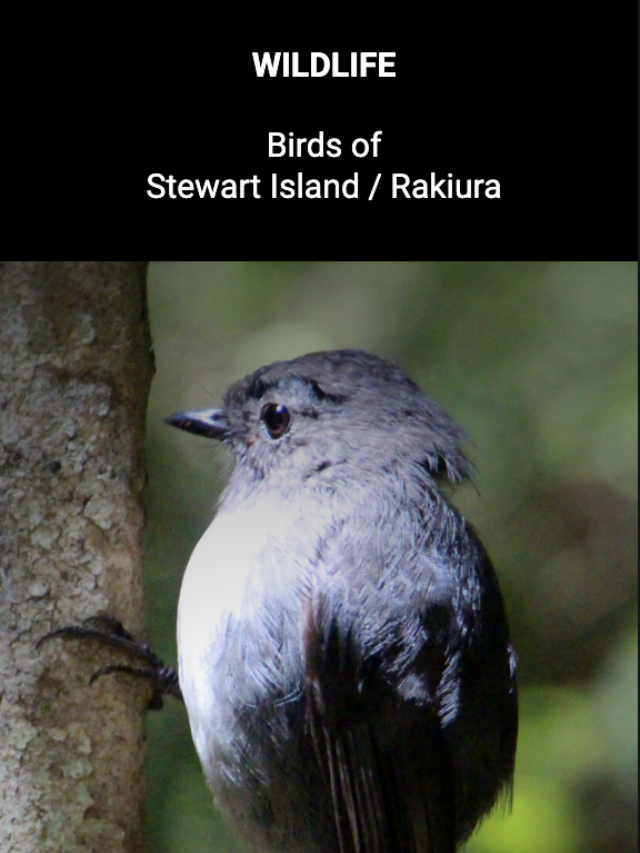
Birds of Stewart Island / Rakiura
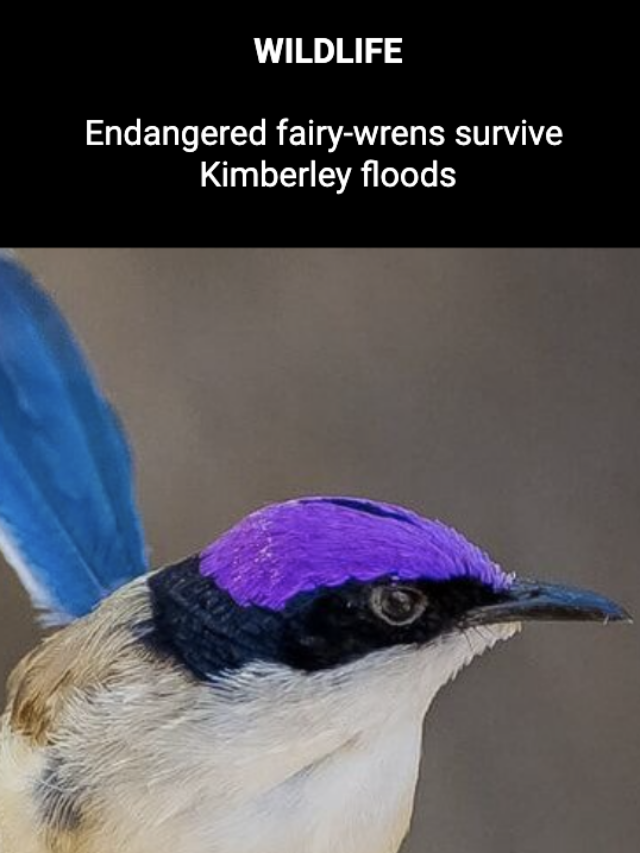
Endangered fairy-wrens survive Kimberley floods
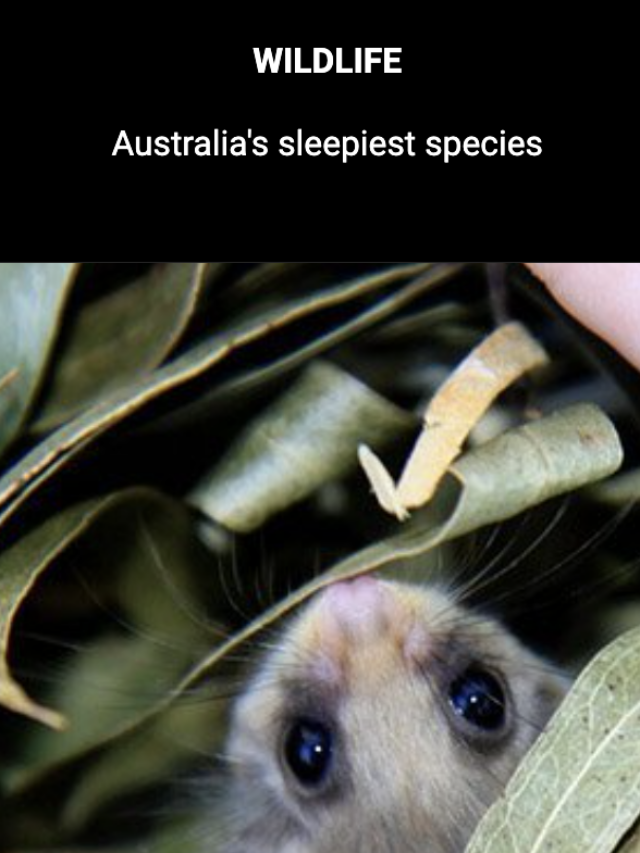
Australia’s sleepiest species
- CruiseMapper
- Lindblad Expeditions
National Geographic Endeavour 2
Former names: nat geo endeavour ii, via australis.
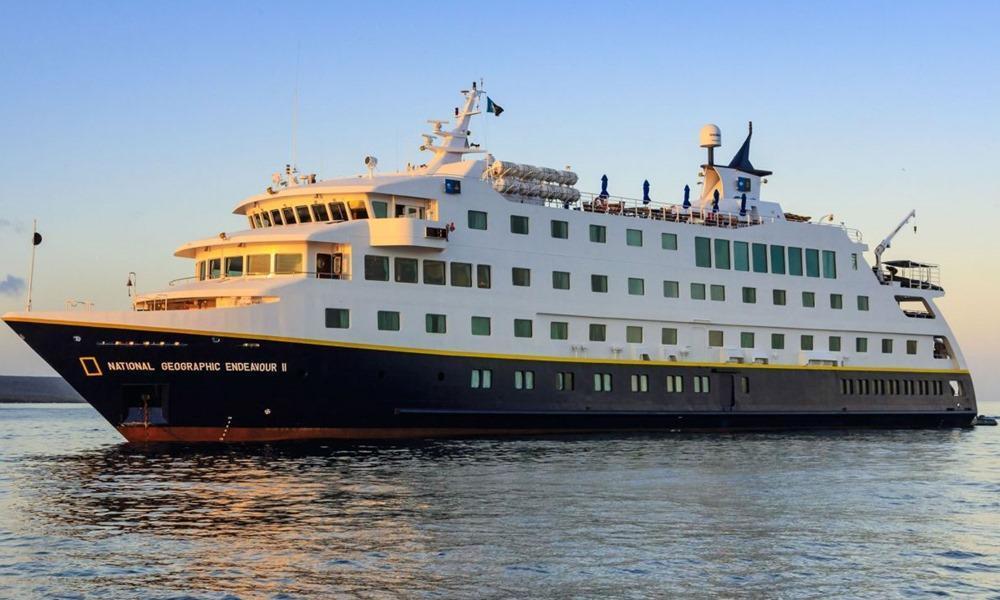
Cruise line Galapagos (Lindblad Expeditions)
- Guayaquil (Ecuador)
National Geographic Endeavour 2 current position
National Geographic Endeavour 2 current location is at South America West Coast (coordinates -0.88412 S / -89.60924 W) cruising en route to TIJERETAS. The AIS position was reported 18 minutes ago.
Current itinerary of National Geographic Endeavour 2
National Geographic Endeavour 2 current cruise is 14 days, one-way from Guayaquil to Callao-Lima . Prices start from USD 14546 (double occupancy rates). The itinerary starts on 24 Aug, 2024 and ends on 07 Sep, 2024 .
Specifications of National Geographic Endeavour 2
- Itineraries
- Review
- Wiki
National Geographic Endeavour 2 Itineraries
National geographic endeavour 2 review, review of national geographic endeavour 2.
The 2005-built National Geographic Endeavour 2 cruise ship (fka "MS Via Australis") joined the Lindblad fleet in 2016. On December 31, 2015, Lindblad Expeditions-National Geographic revealed the purchase of Via Australis for USD 18 million. After a US$10 million drydock refurbishment in late 2016, the boat was redeployed to the Galapagos Islands under the new NatGeo name.
The vessel (IMO number 9334088) is currently Ecuador- flagged (MMSI 735059655) and registered in Guayaquil .
History - construction and ownership
The 96-passenger ship Nat Geo Endeavour 2 is a fully stabilized and ice-strengthened expedition cruise vessel which allows smooth navigation regardless of the itinerary (operational region). This ship is also equipped with exploration tools allowing for daily marine activities.

The National Geographic Endeavour 2 cruise ship is owned and operated by Lindblad Expeditions in cooperation with the National Geographic Society (aka NatGeo - a US non-profit institution for science and education). The partnership that Nat Geo has with Lindblad enables passengers to enjoy an expedition-style small ship travel vacation as active explorers. Lindblad cruise ships sail unique destinations to explore out-of-the-way inlets, making Zodiac landings and looking for wildlife.
National Geographic Endeavour 2 (2005-built as "Via Australis") was acquired by Lindblad Expeditions in 2016. The vessel was purchased for USD 18 million from the "Australis Cruises" - small expedition travel company operating in Patagonia (South America) on itineraries between Punta Arenas and Ushuaia .
Following a USD 10 million drydock refurbishment , the vessel was renamed to "National Geographic Endeavour II". The ship's refit and refurbishment project included:
- redesigning and upgrading 46 double-occupancy passenger cabins, plus 4 single cabins
- redesigning all public spaces (to improve outside views and for quick open deck access in events of wildlife/nature sightings)
- improved main lounge
- additional forward lounge (with large windows and open decks access)
- improved top deck (for open-air gathering, al fresco dining, and stargazing)
- upgraded fitness room and spa
- new modern audio-video system (for media presentations)
- adding a fleet of Zodiacs (large-capacity inflatable boats for landings) and sea kayaks
- improved crew quarters
Decks and Cabins
National Geographic Endeavour 2 has 5 decks (3 with cabins) and 53 staterooms.
All cabins (42 double plus 11 studios) are Outside - with portholes or picture windows.
The number of cabin grades is 8.
Shipboard facilities and amenities
The ship has one Main Dining Room which offers single seating with unassigned tables. The menu is international featuring an Ecuadorian flair.
Lindblad's “Open Bridge” policy allows passengers 24-hour access (depending on weather conditions) to the Wheelhouse/Navigation Bridge to meet and converse with the ship's officers on duty and the Captain.
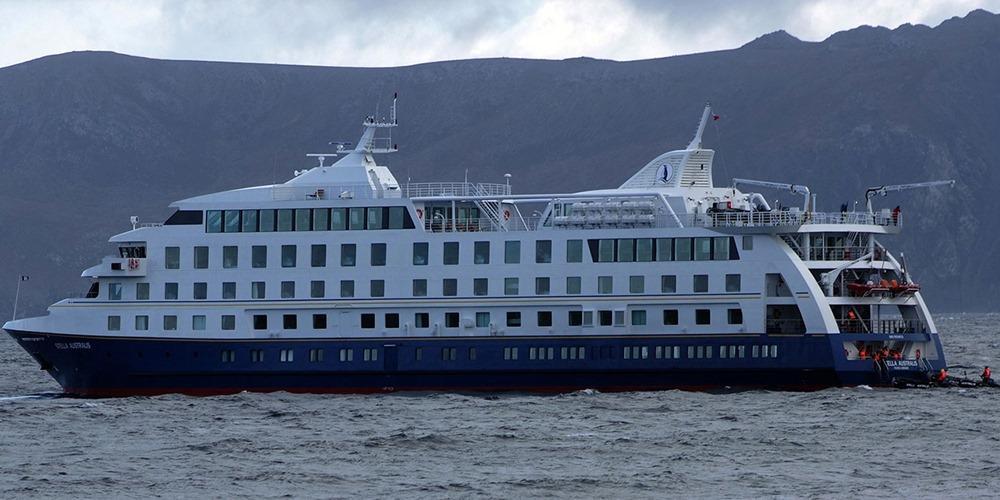
Ideally suited for the intriguing Galapagos expeditions, the ship carries wet suits, snorkeling gear, underwater cameras, a glass-bottom boat, kayaks and a fleet of Zodiacs. Every voyage is accompanied by a full-time doctor, photo instructor, video chronicler, wellness and undersea specialists. Internet access is available shipwide.
Onboard public areas include an intimate covered deck with chairs, tables, and hammocks; a fitness center; spa; global gallery; library; doctor's office; lounge with bar and facilities for slide shows, presentations, and films.
Itineraries
Nat Geo Endeavour 2's itinerary program is based on Galapagos Islands cruises departing from Baltra (pre- and post- cruise hotel stay in Guayaquil Ecuador ).
Photos of National Geographic Endeavour 2

National Geographic Endeavour 2 ship related cruise news
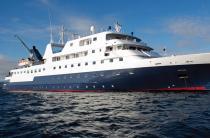
Celebrity's Galapagos ships Xpedition and Xploration join Lindblad-National Geographic fleet
Lindblad Expeditions has acquired the Celebrity Xpedition and Celebrity Xploration from Celebrity Cruises. These two Galapagos-based expedition...

Galapagos cruise operator suspends sailings amidst escalating violence in Ecuador
In response to an escalating wave of violence attributed to drug gangs in Ecuador, at least one Galapagos cruise operator has opted to suspend...

Lindblad waives Solo Premium on select Galapagos cruises in 2021
Starting summer 2021, solo cruisers joining Lindblad Expeditions in Galapagos will be able to experience one-on-one nature time without single...
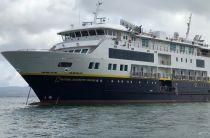
Lindblad Expeditions resume Alaska and Galapagos cruises in June
Lindblad Expeditions announced they planned to resume operations for the 2021 cruise season in Alaska and Galapagos Islands in June. In keeping with...
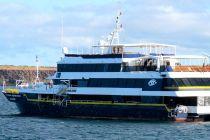
Lindblad Expeditions Announces Short Galapagos Itineraries
Lindblad Expeditions introduced shorter itineraries to Galapagos Islands. It is a first-time move for the cruise line, which boasts 50 years of...
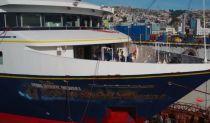
Nat Geo Endeavor II Undergoes Extensive Refit
National Geographic Endeavour ll is currently undergoing a complete refit. The Endeavour ll will sail Galapagos cruises, starting January...
- show more news
Other Galapagos cruise ships
- National Geographic Delfina
- National Geographic Gemini
- National Geographic Islander 2
National Geographic Endeavour 2 Wiki
Among the best small Galapagos cruise ships, National Geographic Endeavour 2 (aka "Nat Geo Endeavour 2") is an expedition cruise vessel designed especially for operations in polar regions. The ship is perfectly suited for Galapagos cruising expeditions, carrying wet suits, snorkeling gear, underwater cameras, sea kayaks, glass-bottom boat and a fleet of Zodiacs.
Every Nat Geo Endeavour II cruise is accompanied by a full-time doctor, photo instructor, a video chronicler, undersea and wellness specialists. Lindblad line's traditional "Open Bridge” policy allows the Ecuadorian officers and the ship's captain to welcome passengers to the navigation bridge.
Nat Geo Endeavour 2 was previously owned and operated by Transportes Marítimos Geo Australis. On December 31, 2015, Lindblad Expeditions-National Geographic advertised the company's purchase of the vessel (previously named "Via Australis") for USD 18 million, followed by a USD 10 million extensive drydock refurbishment conducted in 2016-Q4.
The ship Via Australis was specifically designed to withstand the harsh weather conditions in South America's Chilean Fjords ( Cape Horn region of Patagonia). This is a top-luxury superyacht able to easily navigate in the South American fjords and the shallow bays at the very bottom of the continent. The onboard Zodiacs are used for landings on shore excursions and wildlife viewing tours (offered daily).
MV Via Australis had identification MMSI number 725003280, call-sign number CBVU, and was registered in Chile. The ship is equipped with the latest safety and navigation technology. Its navigation system features a radar, echo sounder, GPS and modern communication systems. The ship also has a sprinkler fire suppression system. Among the changes done by Lindblad was reducing its capacity - Max Passengers (from 136 to 96, and Crew Capacity (from 45 to 64).
Endeavour 2 has installed Fleet Xpress - fast Internet connectivity provided by Inmarsat (owner and operator of a global satellite network). Fleet Xpress is fully integrated with the boat's phone system (PABX) and comm platforms.
Nat Geo Endeavour II has max draft 3,3 m (11 ft) and a powerplant based on Cummins marine diesel engines (model HC-M434C1) with total power output 1250 kW. The vessel (ASENAV yard/hull number 145) was constructed in Valdivia (Chile) by ASENAV (Astilleros Y Servicios Navales SA).
The sistership is The Taipan (1991-built, IMO 8705278, fka "MegaStar Aries" and "Genting World") which since 2022 (renamed "Doulos Hope") is owned by OM Germany (a religious/Christian organization based in Mosbach, Germany) and operated by its subsidiary OM Ships.
Australian History
Published: Mon 9 Nov 2020 at 7:00pm Monday 9 Nov 2020 at 7:00pm Mon 9 Nov 2020 at 7:00pm
Published: Mon 18 May 2020 at 8:00pm Monday 18 May 2020 at 8:00pm Mon 18 May 2020 at 8:00pm
Indigenous Perspectives of Cook Visit
Published: Mon 27 Apr 2020 at 8:00pm Monday 27 Apr 2020 at 8:00pm Mon 27 Apr 2020 at 8:00pm
Endeavour Ship Tour
Endeavour History
Australia Since Cook
Parliament Anniversary
Published: Mon 6 May 2019 at 8:00pm Monday 6 May 2019 at 8:00pm Mon 6 May 2019 at 8:00pm
Endeavour Tour
Published: Tue 1 Mar 2016 at 12:00am Tuesday 1 Mar 2016 at 12:00am Tue 1 Mar 2016 at 12:00am
Chinese Migration
Published: Tue 17 Feb 2015 at 12:00am Tuesday 17 Feb 2015 at 12:00am Tue 17 Feb 2015 at 12:00am
Maritime Past
Published: Tue 2 Sep 2014 at 12:00am Tuesday 2 Sep 2014 at 12:00am Tue 2 Sep 2014 at 12:00am
Published: Tue 18 Mar 2014 at 12:00am Tuesday 18 Mar 2014 at 12:00am Tue 18 Mar 2014 at 12:00am
Constitution
Published: Tue 11 Feb 2014 at 12:00am Tuesday 11 Feb 2014 at 12:00am Tue 11 Feb 2014 at 12:00am
First Fleet
Published: Tue 4 Feb 2014 at 12:00am Tuesday 4 Feb 2014 at 12:00am Tue 4 Feb 2014 at 12:00am
Eureka Stockade
Published: Tue 3 Dec 2013 at 12:00am Tuesday 3 Dec 2013 at 12:00am Tue 3 Dec 2013 at 12:00am

IMAGES
VIDEO
COMMENTS
The National Maritime Museum gives us a tour of the HM Bark Endeavour Replica, which was built to be as close as possible to the original ship sailed by Cook.
Two hundred and forty-six years ago, James Cook landed on the east coast of Australia for the first time. The ship that brought him here was the HMS Endeavour, a British Royal Navy research vessel ...
The National Maritime Museum gives Amelia a tour of the HM Bark Endeavour Replica, which was built to be as close as possible to the original ship sailed by Cook.
The National Maritime Museum gives us a tour of the HM Bark Endeavour Replica, which was built to be as close as possible to the original ship sailed by Cook...
A BTN Special episode to commemorate the 250th anniversary of the Endeavour's voyage to Australia!
Today is the 250th anniversary of the Endeavour's voyage to Australia! Head to the BTN website to watch the full 25-minute special, which also covers...
The Virtual Endeavour program offers every student in Australia the opportunity to explore the HMB Endeavour, without leaving the classroom. Take a Self-guided virtual tour of the HMB Endeavour. Step Aboard an Icon - From Anywhere. A free, curriculum-led, virtual tour of the HMB Endeavour. Using 360 images and video, your virtual host will ...
Explore the HMB Endeavour, the ship that sailed to Australia with James Cook and his crew, in this immersive virtual tour.
Endeavour Voyage: The Untold Stories of Cook and the First Australians exhibition explored views from the ship and shore on the 250th anniversary of the 1770 journey. Endeavour Voyage was on show at the National Museum of Australia from 2 June 2020 to 26 April 2021. Watch filmmaker Alison Page and the Museum's Senior Indigenous Fellow Margo ...
Virtual tour of the HMB Endeavour at the Australian National Maritime Museum, Darling Harbour, Sydney.
Students are introduced to the 18th century world of exploration through a guided tour of the vessel. They explore both above and below decks, from bow to stern. They learn about life on board for the crew, marines, officers and gentlemen by viewing different parts of the ship including Cook's cabin. This tour does involve some bending and ...
If you're thinking of travelling on the Ocean Endeavour on an Antarctic expedition, this ship tour gives you a great introduction of what to expect.
Credits Jack Evans, Reporter Broadcast 27 Apr 2020 Appears In HMB Endeavour 250th Anniversary (Ep 10), 2020 In this episode 1 of 4 Endeavour History 2 of 4 Endeavour Ship Tour 3 of 4 4 of 4 ...
A tour of a replica of the HMS Endeavour, which James Cook sailed on his first Pacific voyage (1768-71).
The Australian-built replica of James Cook's HMB Endeavour is one of the world's most accurate maritime replica vessels. When you come on board you may wonder whether James Cook and his crew have just stepped ashore somewhere on their voyage. The table is set, clothes are hung and the cat is slumbering. On board the beautifully crafted ship ...
Source: The Natural History Museum, London Read more HMS Endeavour departed New Zealand on 31 March 1770 and was subsequently remembered by Māori as 'Tupaia's ship'. The British Library has compiled responses to the arrival of the Endeavour from across the Pacific.
BTN Learn with flashcards, games, and more — for free.
After a 20-year search for the final resting place of Captain James Cook's famous ship HMB Endeavour, maritime archaeologists are finally closing in on its wreck in the US state of Rhode Island.
Imagine sailing with 94 people on board a ship for three years! That's exactly what Captain James Cook did when he sailed on Endeavour and eventually landed on the east coast of Australia.
e o the Endeavour long and difficult? 18. e t ou Endeavour Ship Tour we tour in the BTN s or is a replica. What does that m vo sc
Current itinerary of National Geographic Endeavour 2 National Geographic Endeavour 2 current cruise is 14 days, one-way from Guayaquil to Callao-Lima. Prices start from USD 14380 (double occupancy rates). The itinerary starts on 17 Aug, 2024 and ends on 31 Aug, 2024.
uss the BtN Endeavour Tour story as a class. What questions were raised in the discussion (what are the gaps in their knowledge)? The following KWLH organiser provides students with a framework to ...
Behind the News is a fun, accessible way for upper primary and secondary students to learn about what's happening in the world around them.